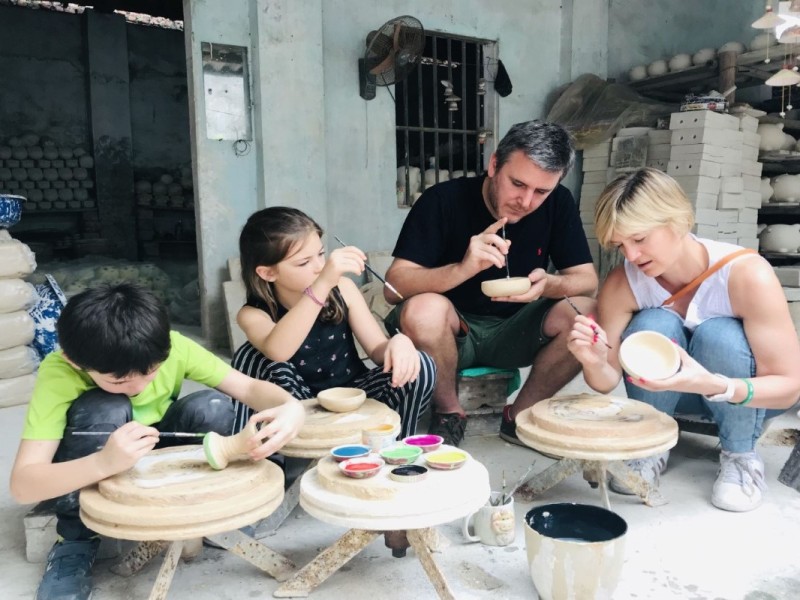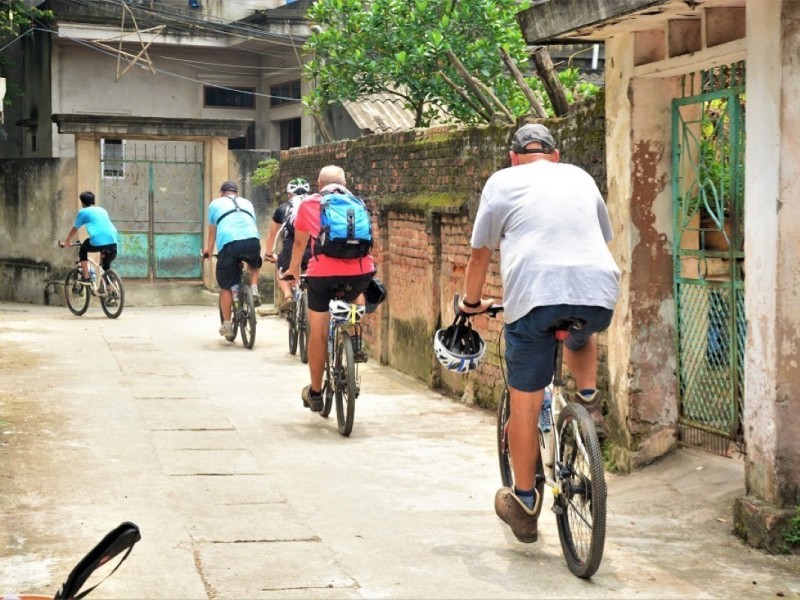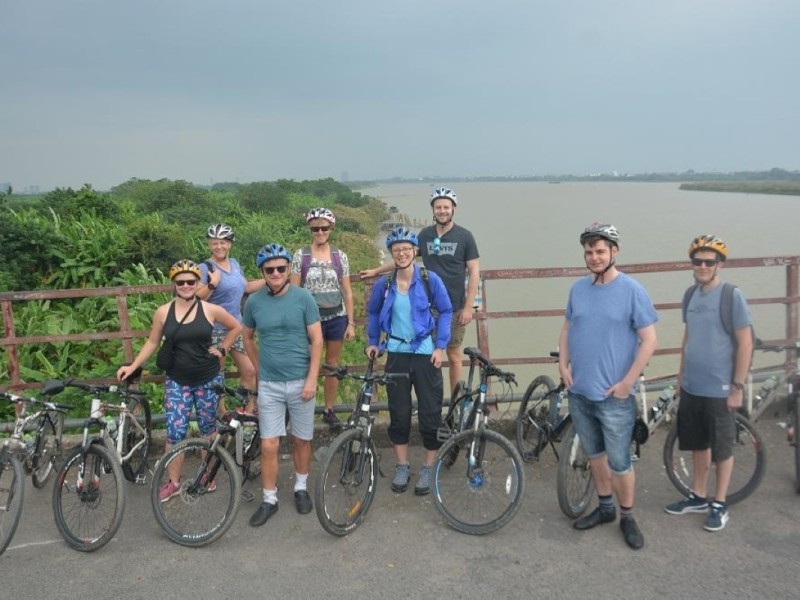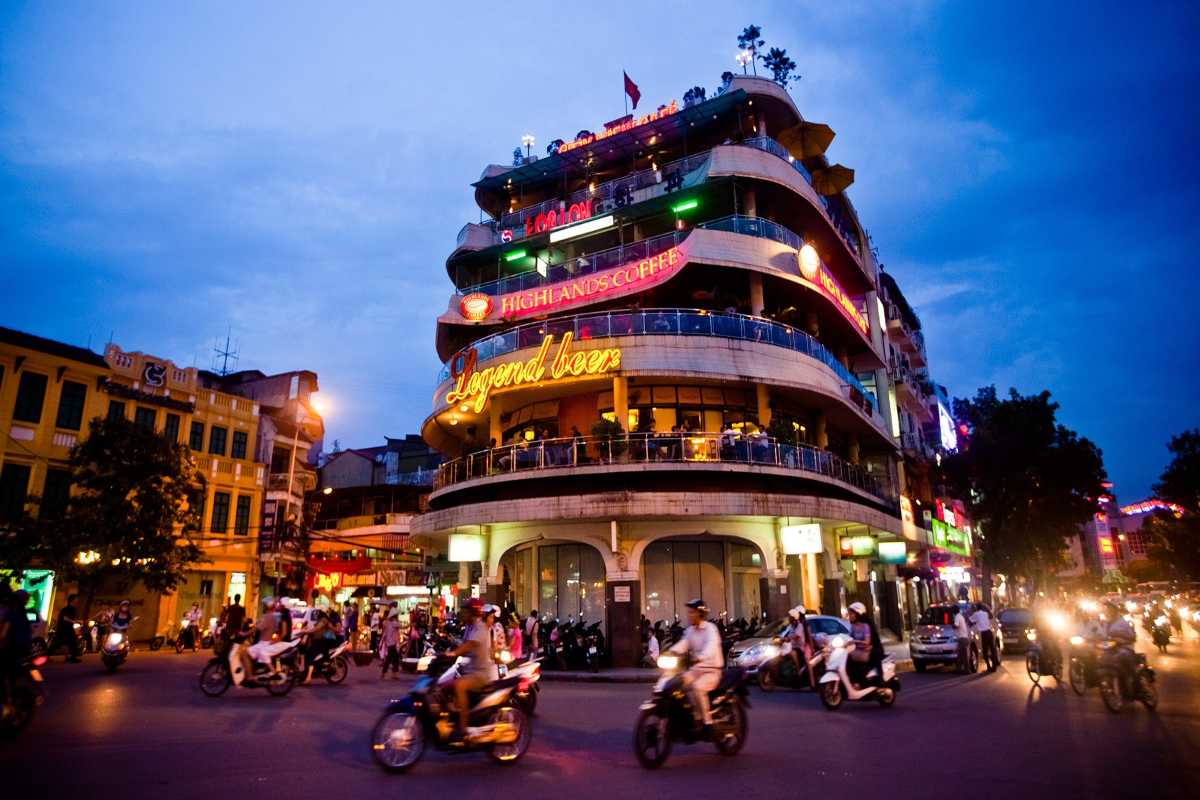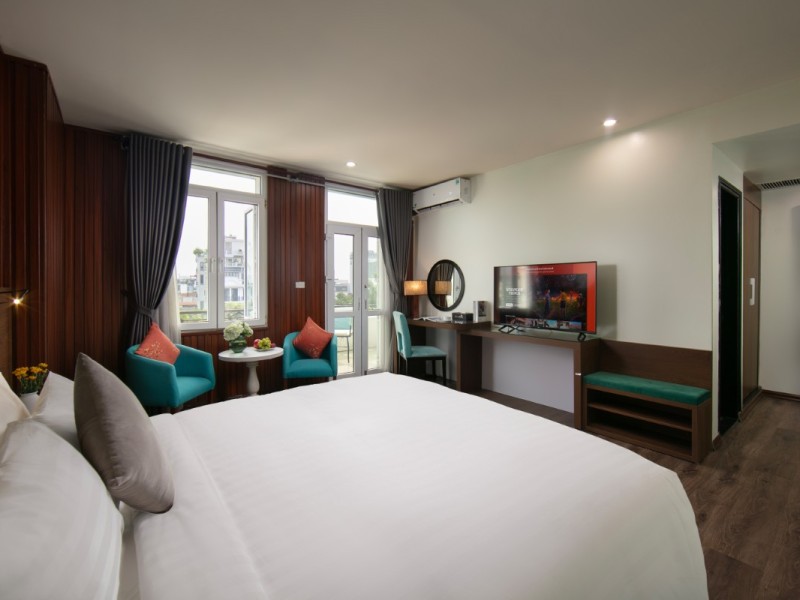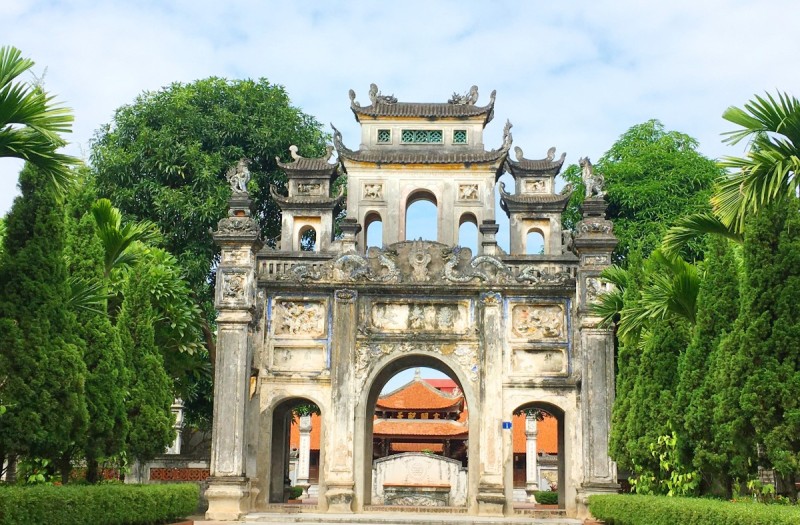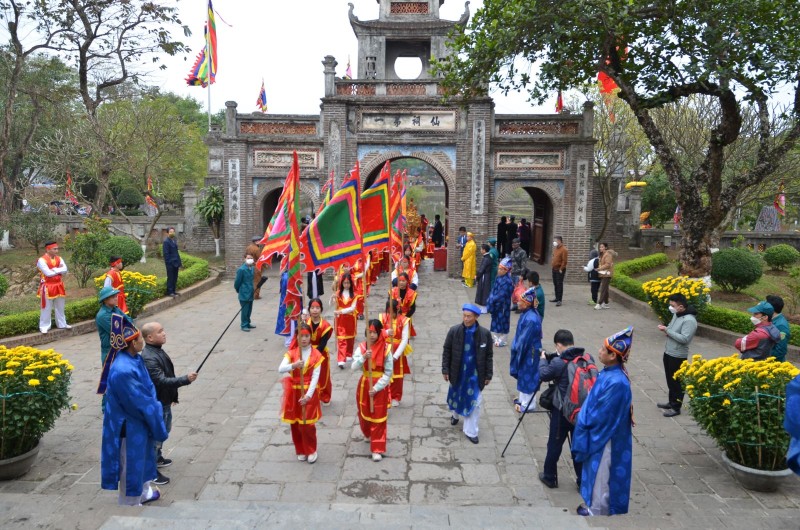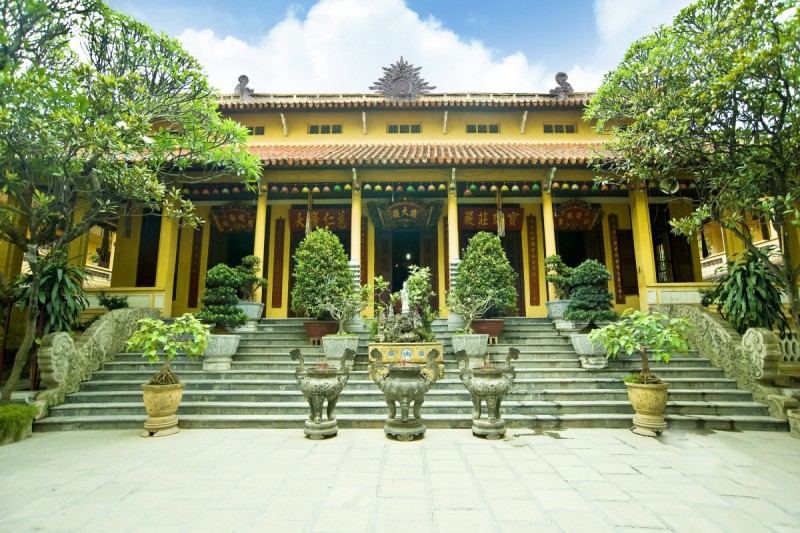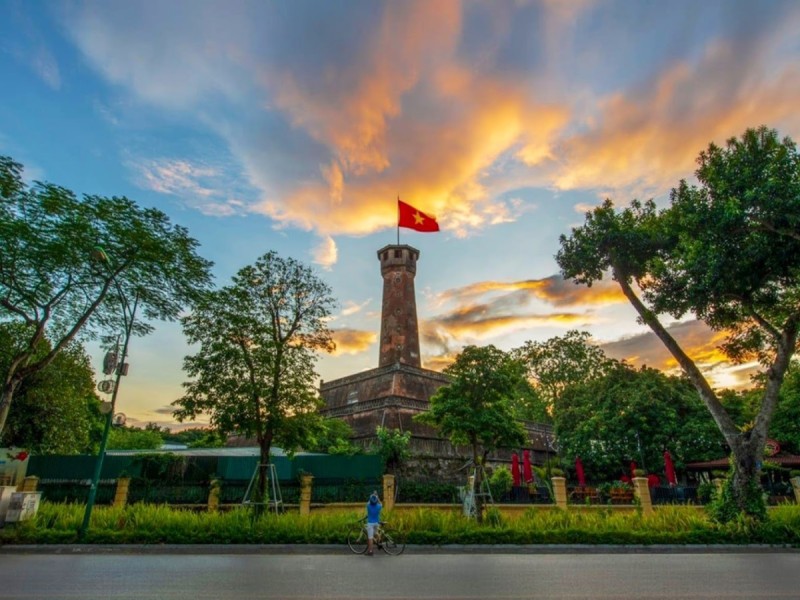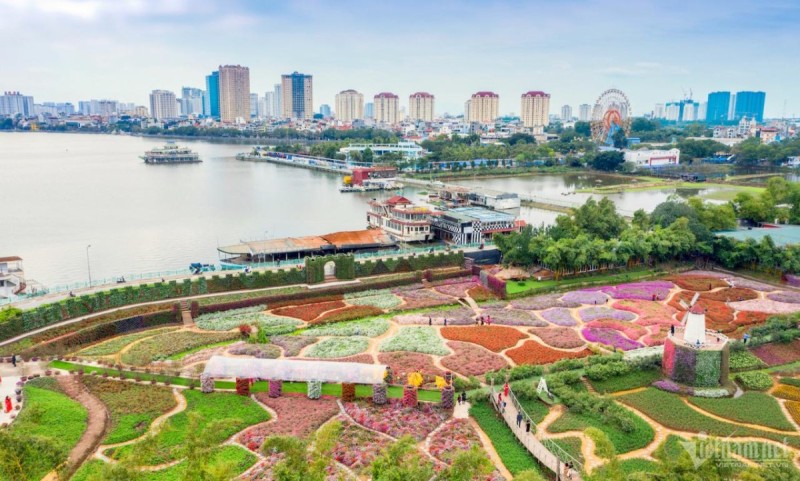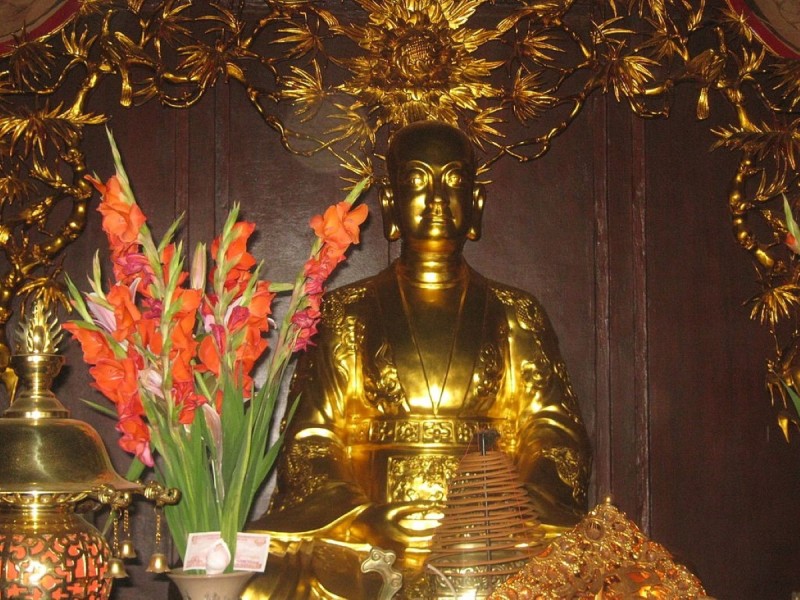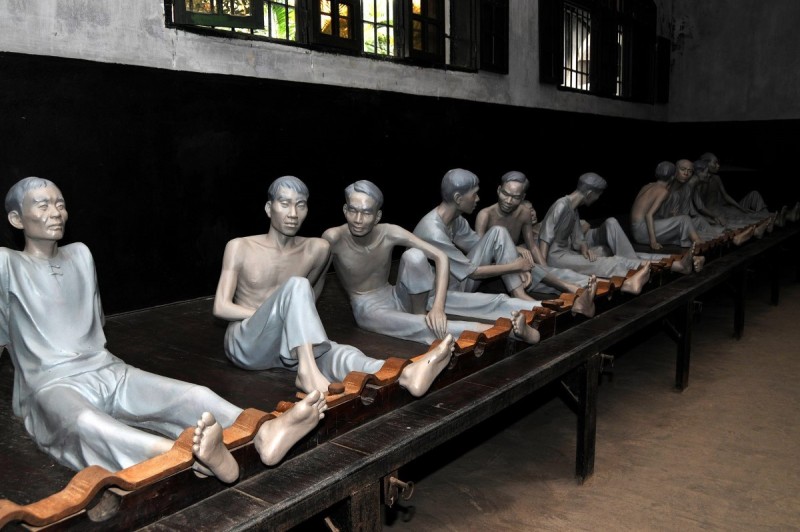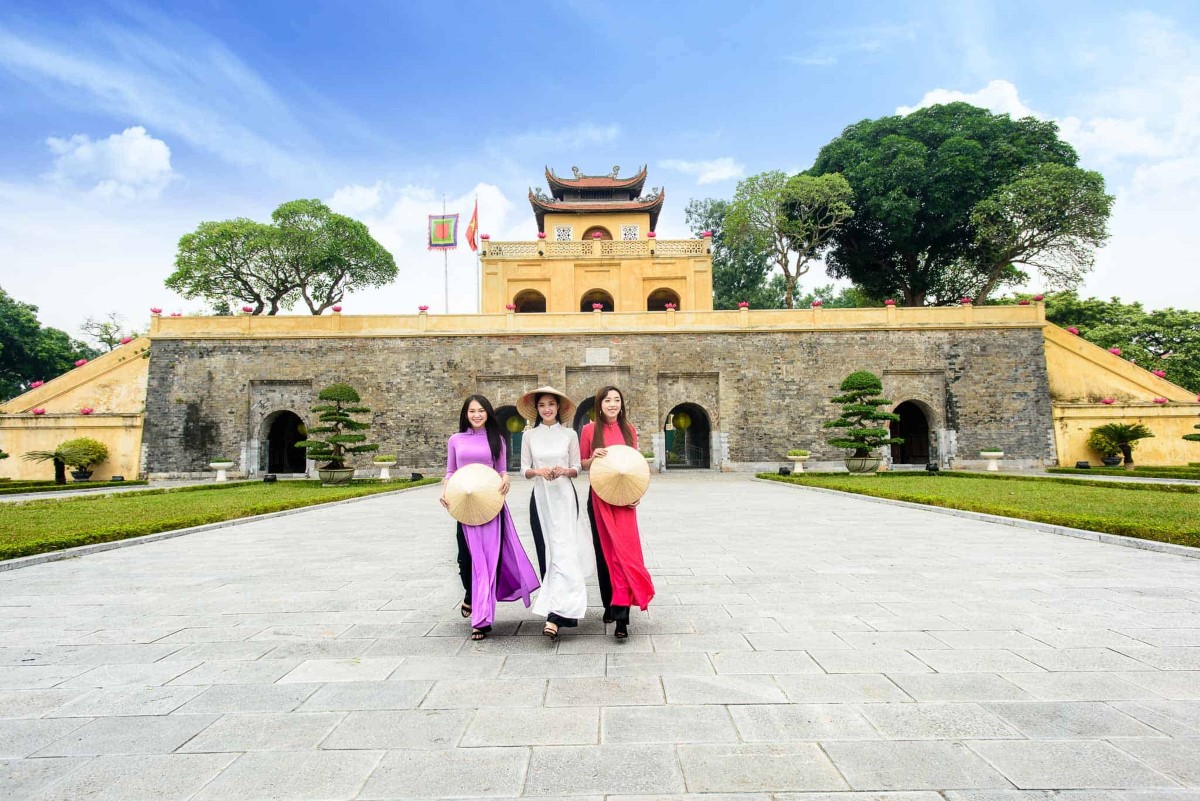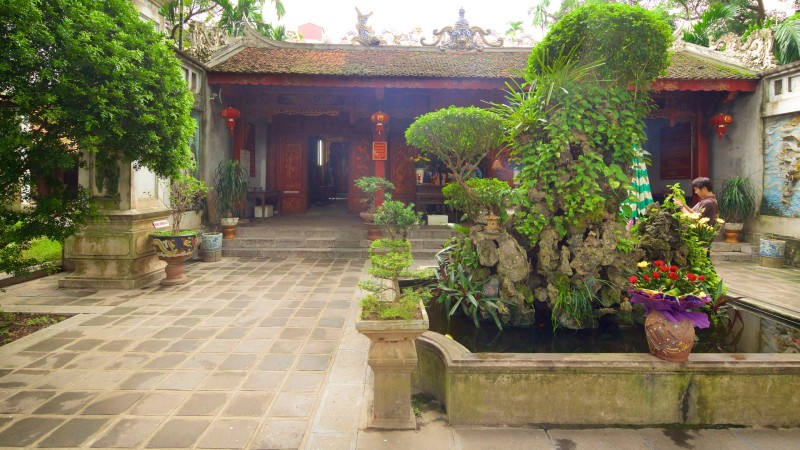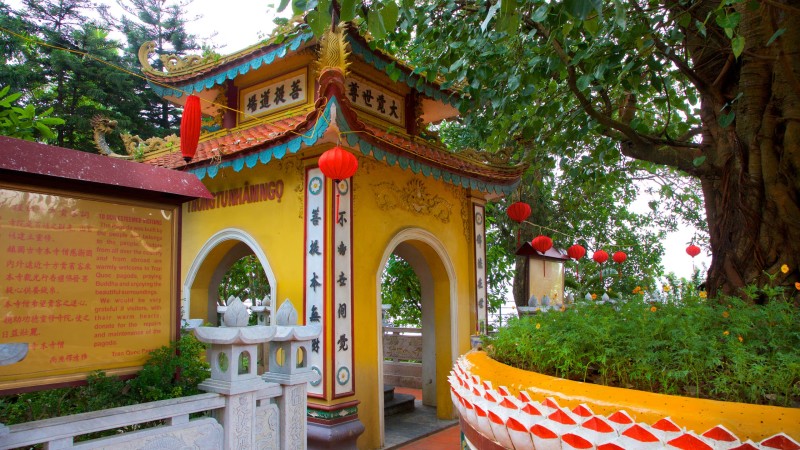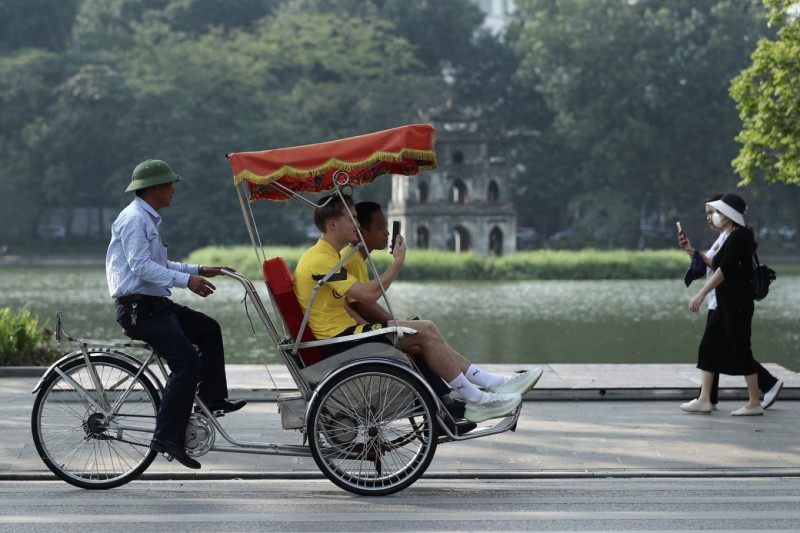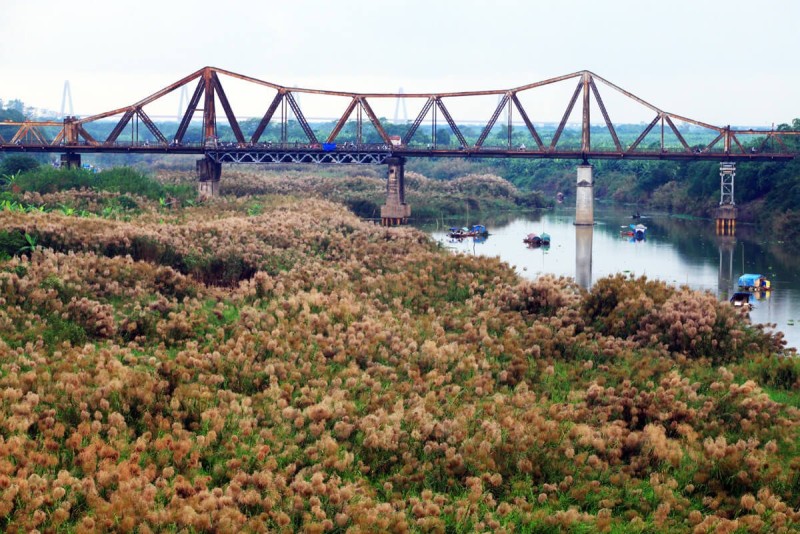Explore the Best of French Quarter Hanoi: Attractions, Tours & Hotels
Hanoi French Quarter is a historic district in Hanoi known for its well-preserved French colonial architecture, cultural landmarks, and vibrant visitor experiences. It offers a unique blend of heritage sites, museums, cafes, and guided tours, making it an essential destination for exploring Hanoi’s colonial past and urban charm.
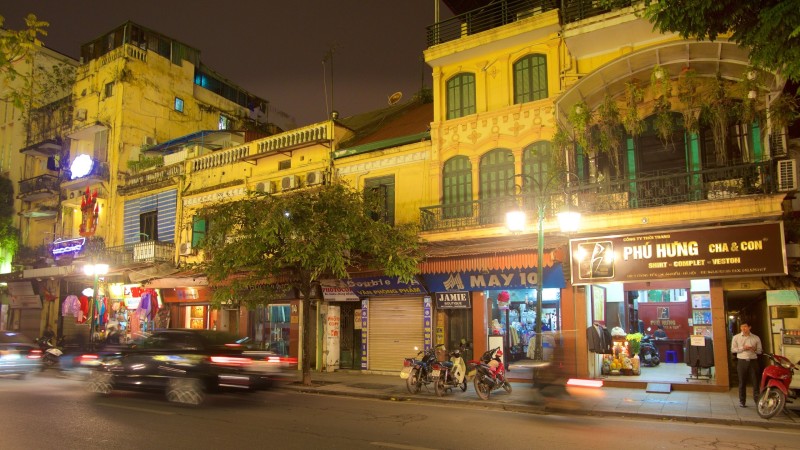
Introduction to Hanoi French Quarter
The Hanoi French Quarter is a distinctive part of Hanoi that tells the story of the city's colonial past through its unique architecture and urban design. This historic district blends European elegance with Vietnamese culture, creating a captivating atmosphere for visitors. Known for its tree-lined boulevards, grand colonial buildings, and vibrant street life, the quarter offers a rich urban cultural landscape that invites exploration.
Experience the charm of a colonial heritage district where history and modernity meet. Whether you are interested in architecture, history, or cultural landmarks, the Hanoi French Quarter provides an engaging introduction to the city’s evolving identity. This guide offers a comprehensive overview of the quarter’s significance, attractions, and visitor tips to help you plan your visit with confidence and curiosity.
Plan your journey to the Hanoi French Quarter and uncover the stories embedded in its streets and buildings.
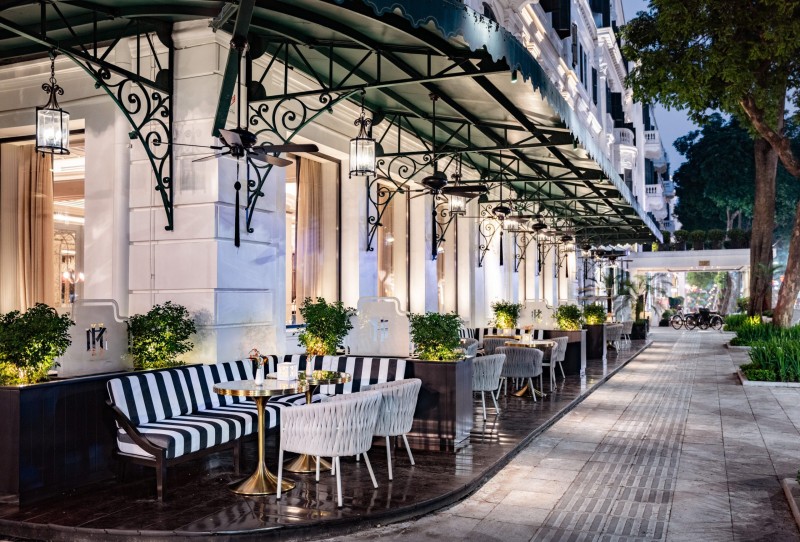
Overview of Hanoi French Quarter
The Hanoi French Quarter is located in the heart of Hanoi, adjacent to the bustling Old Quarter. Established during the French colonial period, it was designed as the administrative and residential area for French officials and businesses. Today, it stands out for its wide streets, French-style villas, and significant cultural sites.
This district offers visitors a glimpse into Hanoi’s past through its preserved colonial architecture and urban planning. The quarter is an essential part of the city’s historic fabric and provides a calm contrast to the lively markets of the nearby Old Quarter.
Visitors to the Hanoi French Quarter can enjoy leisurely walks along leafy avenues, discover historic landmarks, and soak in the blend of French and Vietnamese influences that shape this unique neighborhood.
Plan your exploration of the Hanoi French Quarter to experience a serene side of Hanoi’s cultural heritage.
Significance within Hanoi’s Urban and Cultural Landscape
The Hanoi French Quarter holds significant cultural and historical importance in Hanoi’s urban development. It reflects the city’s colonial legacy through its carefully preserved architecture and planned city layout. The quarter serves as a testament to the fusion of European styles with local traditions, creating a distinctive cultural landmark.
Key highlights of the quarter’s significance include:
- Colonial heritage: Showcases French colonial influence on urban planning and architecture.
- Cultural landmarks: Home to important sites like the Hanoi Opera House and St. Joseph’s Cathedral.
- Urban history: Represents a phase of Hanoi’s growth and modernization during the early 20th century.
- Preservation efforts: Ongoing initiatives protect the quarter’s architectural integrity.
These elements combine to make the Hanoi French Quarter an essential part of the city’s identity and an enriching destination for cultural tourists.
Explore the Hanoi French Quarter to appreciate its role in shaping Hanoi’s cultural landscape.
What Makes the French Quarter a Must-Visit Destination
The Hanoi French Quarter offers visitors a variety of attractions and experiences that make it a must-see in Hanoi:
- Iconic colonial architecture: Elegant buildings with neoclassical and beaux-arts styles.
- Cultural institutions: Museums and theaters that preserve local history and arts.
- Culinary delights: Cafes and restaurants blending French and Vietnamese flavors.
- Vibrant street life: Tree-lined boulevards perfect for walking and people-watching.
- Historical significance: A living museum of the city’s colonial past.
Visitors seeking history, culture, or leisurely exploration will find the Hanoi French Quarter an unforgettable destination.
Plan your visit to the Hanoi French Quarter to experience its unique charm and diverse attractions.
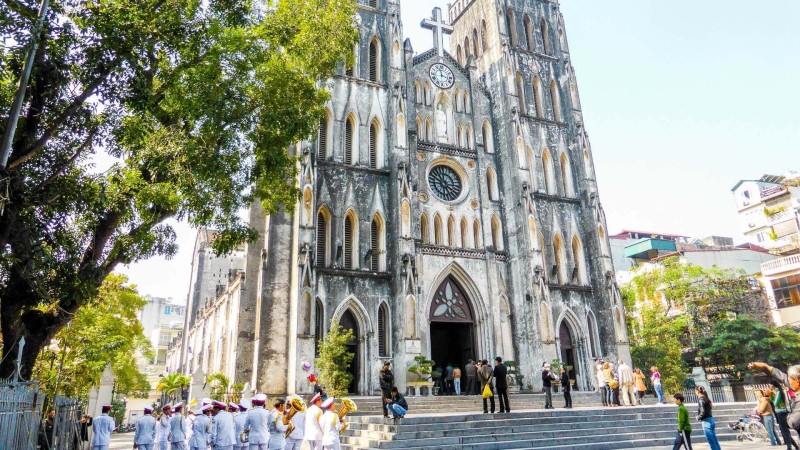
Purpose and Scope of the Guide
This guide to the Hanoi French Quarter is designed to help you understand the rich history, cultural significance, and key attractions of this unique district. Whether you are planning your first visit or looking for insider tips, this article provides practical information and detailed insights to make your experience rewarding. Use this guide as a comprehensive resource to explore the quarter with confidence and curiosity.
Gain clear travel planning advice and cultural context that will enrich your visit to the Hanoi French Quarter. This guide breaks down everything you need to know, from historical background to visitor tips, ensuring you get the most out of your time in this captivating part of Hanoi.
What Readers Will Learn and How to Use This Guide
In this guide, you will learn essential information about the Hanoi French Quarter, including:
- Historical insights: Discover the quarter’s colonial past and architectural styles.
- Top attractions: Explore key sites such as museums, theaters, and cultural landmarks.
- Practical tips: Get advice on transportation, best times to visit, and local customs.
- Cultural context: Understand the role of the quarter in Hanoi’s urban landscape.
Use these sections to navigate the guide easily and plan a visit tailored to your interests and needs.
With this knowledge, you will feel prepared and excited to experience the Hanoi French Quarter firsthand.
Brief Mention of Topics Covered: History, Attractions, Visitor Tips
This article covers:
- The history and evolution of the Hanoi French Quarter.
- Iconic colonial architecture and cultural attractions.
- Museums, parks, and dining experiences within the district.
- Visitor information including transportation, accessibility, and practical advice.
- Conservation efforts and sustainable tourism practices.
- Nearby neighborhoods and accommodation recommendations.
These topics provide a well-rounded understanding of the quarter, helping you explore it fully and thoughtfully.
Start your journey with confidence by using this comprehensive guide to the Hanoi French Quarter.
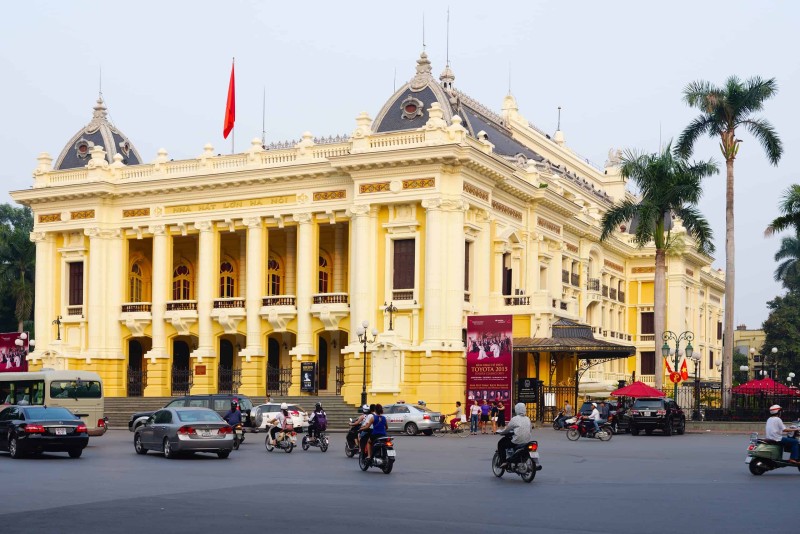
Historical Background of Hanoi French Quarter
The Hanoi French Quarter offers a fascinating window into the city’s colonial past, tracing its origins to the period when Hanoi was under French rule. This district was purposefully designed to serve as the administrative and residential hub for French officials, reflecting the colonial governance and urban development strategies of the era. The quarter is renowned for its distinctive architectural heritage, blending European styles with local influences. Understanding this history deepens appreciation for the quarter’s role in shaping modern Hanoi and highlights ongoing efforts in heritage preservation.
Exploring the Hanoi French Quarter reveals how colonial administration and cultural exchange left a lasting imprint on the urban landscape. This background provides important context for the quarter’s landmarks and streetscapes today, making your visit more meaningful.
Plan your exploration of the Hanoi French Quarter with this rich historical insight to fully appreciate its unique character.
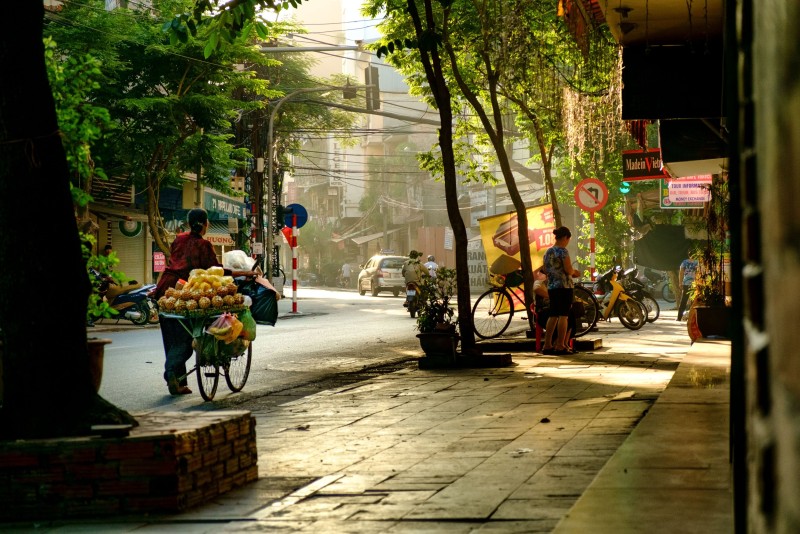
Origins and Development During French Colonial Period
The Hanoi French Quarter was established during the French colonial period as part of the broader urban planning in French Indochina. Designed primarily to house administrative offices and residences for French officials, it featured wide boulevards, carefully zoned neighborhoods, and grand buildings reflecting European tastes.
This period marked the introduction of neoclassical and beaux-arts architectural styles into Hanoi’s cityscape. The quarter’s layout was a deliberate expression of colonial power and modernity, shaping the city’s evolution well into the 20th century.
Understanding the origins of the Hanoi French Quarter during the French colonial period provides valuable insight into its design principles and cultural significance.
Explore the foundations of the Hanoi French Quarter to see how colonial ambitions shaped its development.
Establishment of the French Administrative and Residential District
The Hanoi French Quarter was formally designated as the center for colonial administration and elite residences. Key points include:
- Colonial governance: The quarter housed government offices and military headquarters.
- Residential planning: French officials and expatriates lived in spacious villas and apartments.
- Urban zoning: The district was carefully planned with wide streets and public squares.
- Infrastructure: Modern amenities such as electricity and water were introduced.
These planning efforts established the quarter as a symbol of colonial authority and European lifestyle in Hanoi.
Discover how the administrative and residential functions shaped the Hanoi French Quarter’s early identity.
Architectural Styles Introduced (Neoclassical, Art Deco, Beaux-Arts)
The quarter’s architecture reflects several European influences:
- Neoclassical: Symmetry, grand columns, and ornate facades defining many public buildings.
- Art Deco: Geometric forms and decorative motifs appearing in later constructions.
- Beaux-Arts: Elaborate detailing, sculptures, and balanced proportions in key landmarks.
These styles combined to create a distinctive urban fabric that remains visible today.
Appreciate the diverse architectural heritage that makes the Hanoi French Quarter visually unique.
Key Historical Events Influencing the Quarter’s Evolution
Significant moments shaping the quarter include:
- French colonial expansion (late 19th to early 20th century): Establishing the quarter’s foundation.
- Vietnamese independence movements: Political changes affecting governance and ownership.
- Urban development post-independence: Shifts in land use and modernization pressures.
- Preservation efforts: Recent initiatives to maintain heritage buildings amid urban growth.
These events chart the dynamic history and transformation of the Hanoi French Quarter.
Reflect on the quarter’s evolving role in Hanoi’s history as you explore its streets.
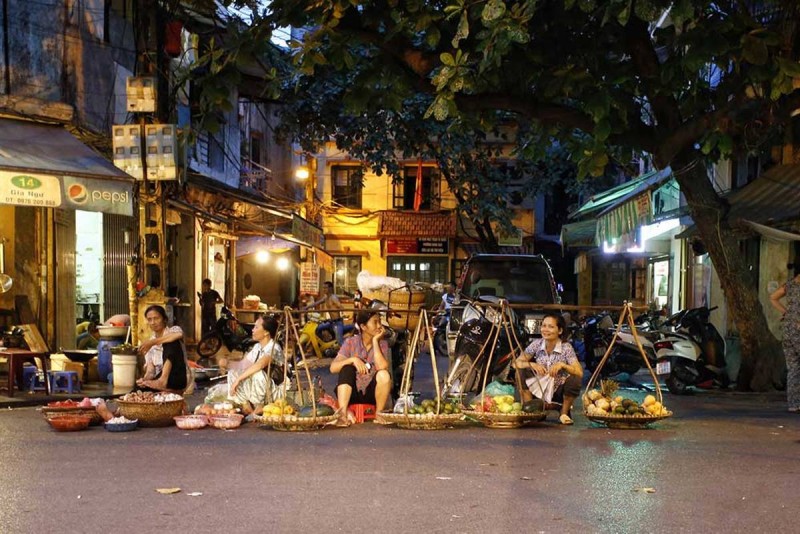
Post-Colonial Changes and Modern Transformations
The Hanoi French Quarter has undergone significant changes since the end of French colonial rule. As Hanoi evolved into the capital of an independent nation, the quarter adapted to new political realities and urban demands. Modernization efforts introduced new infrastructure and development, while ongoing heritage conservation attempts strive to preserve the area’s unique character. The quarter today balances its historic identity with the pressures of urban growth and changing land use.
Understanding these post-colonial transformations helps visitors appreciate the quarter not only as a historical relic but as a living, evolving part of Hanoi.
Discover how the Hanoi French Quarter continues to shape and reflect the city’s dynamic urban landscape.
Impact of Independence and Urban Development on the Area
Following Vietnamese independence, the Hanoi French Quarter experienced major political and urban shifts:
- Vietnamese independence: Transition from colonial to national governance.
- Urban renewal projects: Infrastructure upgrades adapting to a growing city.
- City planning changes: Adjustments in zoning and land use reflecting new priorities.
- Socio-political shifts: Changes in ownership and function of colonial buildings.
These developments reshaped the quarter’s role and physical landscape in modern Hanoi.
Learn how independence and urban growth transformed the Hanoi French Quarter.
Preservation Challenges and Changes in Land Use
The quarter faces ongoing challenges in maintaining its historic character:
- Heritage preservation: Efforts to protect colonial architecture amid development pressures.
- Land use changes: Conversion of buildings for commercial or residential purposes.
- Urbanization threats: Risk of losing historic fabric due to rapid city growth.
- Conservation programs: Local and governmental initiatives addressing preservation needs.
Balancing development with conservation remains crucial for the Hanoi French Quarter’s future.
Explore the preservation efforts and challenges shaping this historic district.
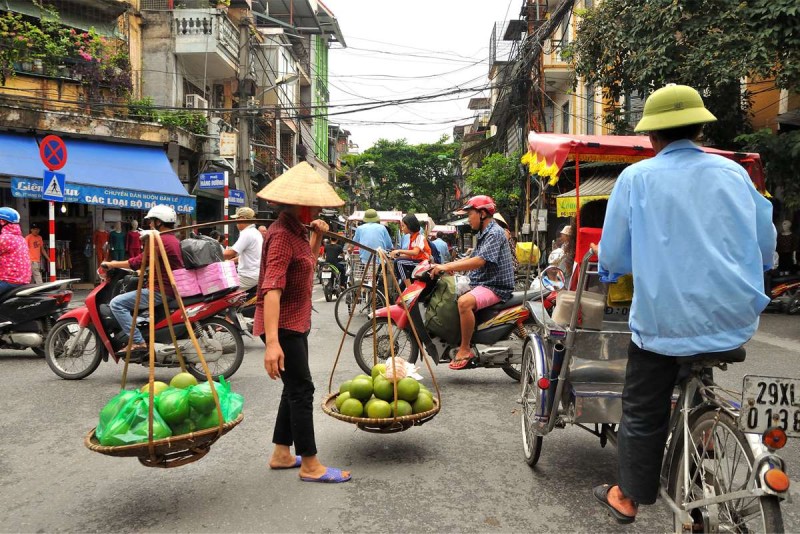
Cultural Significance and Heritage Value
The Hanoi French Quarter plays a vital role in shaping Hanoi’s cultural identity and urban heritage. Its distinctive architecture and historical depth make it a symbol of the city’s colonial past and its transformation into a modern capital. The quarter’s cultural landmarks, vibrant street life, and preserved urban fabric contribute significantly to the community’s sense of identity and continuity.
Appreciating the Hanoi French Quarter means recognizing its influence on Hanoi’s broader cultural landscape. This area stands as a living museum that connects past and present, enriching both locals and visitors alike.
Experience the unique heritage of the Hanoi French Quarter as a cornerstone of Hanoi’s urban culture.
Role in Hanoi’s Identity and Cultural Landscape
The Hanoi French Quarter influences Hanoi’s cultural and social life in several ways:
- Urban culture: The quarter reflects a blend of Vietnamese and French colonial traditions.
- Cultural heritage: It preserves architectural and historical elements unique to the city.
- Community identity: Residents and visitors alike identify with the quarter’s historic charm.
- Public life: The area hosts cultural events, festivals, and social gatherings.
These factors make the quarter a key part of Hanoi’s vibrant cultural fabric.
Discover how the Hanoi French Quarter enriches the city’s identity and community spirit.
Recognition by Heritage Organizations and Local Authorities
The Hanoi French Quarter benefits from formal heritage protection and recognition:
- UNESCO considerations: The quarter contributes to Hanoi’s status as a cultural heritage city.
- Heritage regulations: Local laws protect buildings and streetscapes from unsympathetic development.
- Preservation programs: Ongoing initiatives promote restoration and cultural education.
- Government support: Authorities prioritize maintaining the quarter’s historical character.
These designations ensure the quarter remains a preserved and celebrated part of Hanoi.
Learn about the official efforts safeguarding the Hanoi French Quarter’s legacy.

Key Attractions in Hanoi French Quarter
The Hanoi French Quarter is home to some of the city’s most iconic landmarks and cultural sites, showcasing a rich blend of architectural styles and historical significance. From elegant colonial buildings to renowned museums and tranquil parks, the quarter offers diverse experiences for travelers interested in history, culture, and urban exploration.
Visitors can admire grand structures like the Hanoi Opera House, explore important museums such as the Hoa Lo Prison Museum, and enjoy serene green spaces like Ly Thai To Park. Each attraction tells a story of the quarter’s unique past and vibrant present.
Plan your visit to the Hanoi French Quarter to experience these must-see landmarks and soak in the area’s distinctive charm.
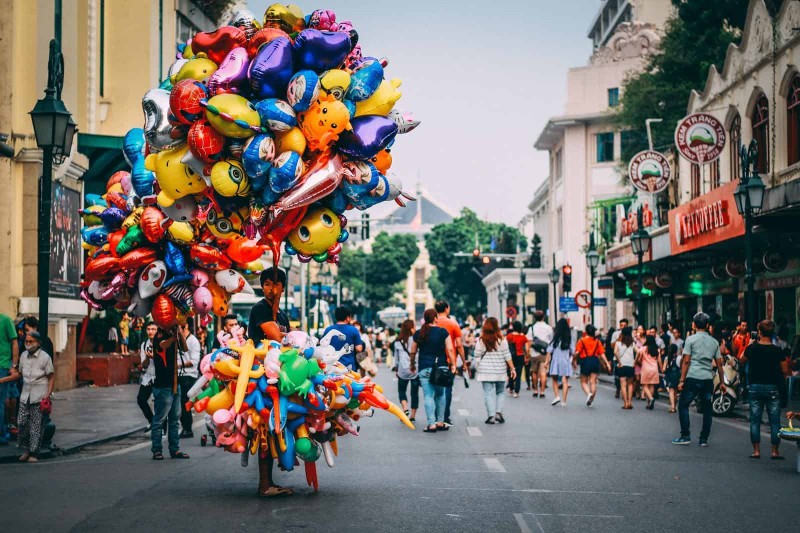
Iconic Colonial Architecture
The architectural heritage of the Hanoi French Quarter defines its visual identity. French colonial influences are evident in the quarter’s neoclassical, beaux-arts, and neo-gothic buildings, which continue to impress visitors with their elegance and historical depth.
Key highlights include:
- Hanoi Opera House: A masterpiece of French beaux-arts architecture and a hub for cultural performances.
- St. Joseph’s Cathedral: Noted for its neo-gothic design and spiritual significance.
- Sofitel Legend Metropole Hotel: A historic luxury hotel blending heritage charm with modern hospitality.
These buildings exemplify the quarter’s architectural styles and the legacy of French colonial urban design.
Explore the Hanoi French Quarter to appreciate its outstanding colonial architecture.
Hanoi Opera House – History and Architectural Highlights
The Hanoi Opera House is a symbol of colonial elegance and cultural heritage in the Hanoi French Quarter.
- Built in the early 20th century, it reflects French beaux-arts architecture.
- It serves as a premier venue for opera, ballet, and traditional Vietnamese performances.
- Architectural features include ornate facades, grand staircases, and intricate interior decorations.
- The opera house remains a cultural landmark, attracting both locals and tourists.
Visiting the Hanoi Opera House offers a glimpse into the quarter’s artistic legacy and architectural grandeur.
St. Joseph’s Cathedral – Design and Visitor Experience
St. Joseph’s Cathedral stands as a stunning example of neo-gothic architecture in the heart of the Hanoi French Quarter.
- The cathedral features twin bell towers, stained glass windows, and pointed arches.
- It offers a peaceful atmosphere for reflection and religious services.
- Visitors can appreciate its historical significance as one of the oldest churches in Hanoi.
- The cathedral’s central location makes it easily accessible for tourists exploring the quarter.
Experience the serene beauty and spiritual heritage of St. Joseph’s Cathedral during your visit.
Sofitel Legend Metropole Hotel – Historical Relevance and Luxury Hospitality
The Sofitel Legend Metropole Hotel is a prestigious heritage hotel that embodies the luxury and history of the Hanoi French Quarter.
- Established in 1901, it blends French colonial architecture with modern amenities.
- The hotel has hosted notable guests, including writers and politicians.
- Its elegant design includes spacious rooms, manicured gardens, and exquisite dining options.
- Staying here offers a unique opportunity to immerse yourself in the quarter’s historic ambiance.
Choose the Sofitel Legend Metropole Hotel for a luxurious stay steeped in cultural significance.
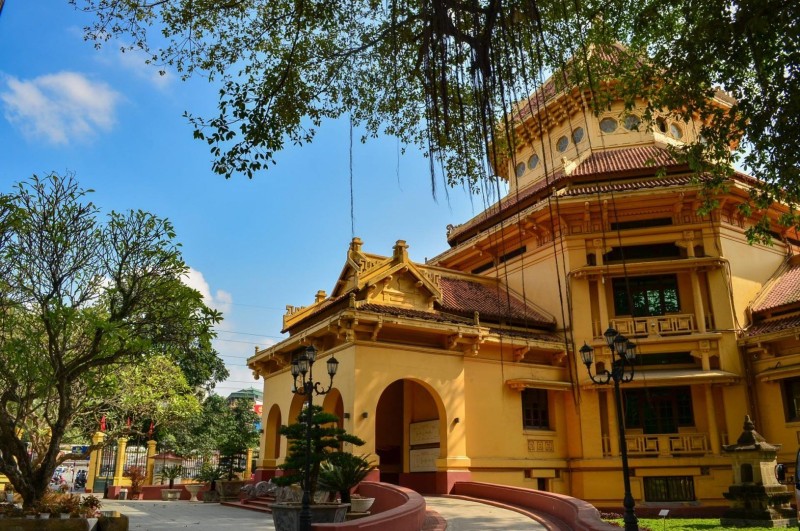
Museums and Cultural Sites
The Hanoi French Quarter is enriched by several museums and cultural institutions that offer deep insights into Vietnam’s history and colonial past. These sites provide visitors with educational and reflective experiences, showcasing artifacts, stories, and exhibits that illuminate the area’s complex heritage.
Key museums such as the Hoa Lo Prison Museum and the Vietnam National Museum of History highlight the quarter’s role in Vietnam’s cultural and historical narrative. Exploring these institutions adds depth to your visit and helps contextualize the quarter’s significance within the broader story of Hanoi and Vietnam.
Plan your visit to include these important cultural sites for a well-rounded understanding of the Hanoi French Quarter.
Hoa Lo Prison Museum – Historical Context and Exhibits
The Hoa Lo Prison Museum offers a sobering look at Vietnam’s colonial and wartime history.
- Originally built by the French colonial administration to house political prisoners.
- Exhibits include cells, artifacts, and stories related to the Vietnam War and colonial resistance.
- The museum provides context on the prison’s role during French rule and American involvement.
- Visitors can learn about the resilience and struggles of Vietnamese prisoners.
A visit to the Hoa Lo Prison Museum adds a profound historical dimension to your trip through the Hanoi French Quarter.
Vietnam National Museum of History – Collections Related to French Colonial Period
The Vietnam National Museum of History houses extensive collections that include artifacts from the French colonial era.
- Displays cover Vietnamese history from prehistoric times through colonial periods.
- Key colonial artifacts highlight daily life, governance, and cultural exchanges during French rule.
- The museum features archaeological finds, traditional costumes, and historical documents.
- It serves as an educational resource for understanding the heritage of the Hanoi French Quarter.
Explore the museum’s rich collections to gain a deeper appreciation of the quarter’s cultural context.
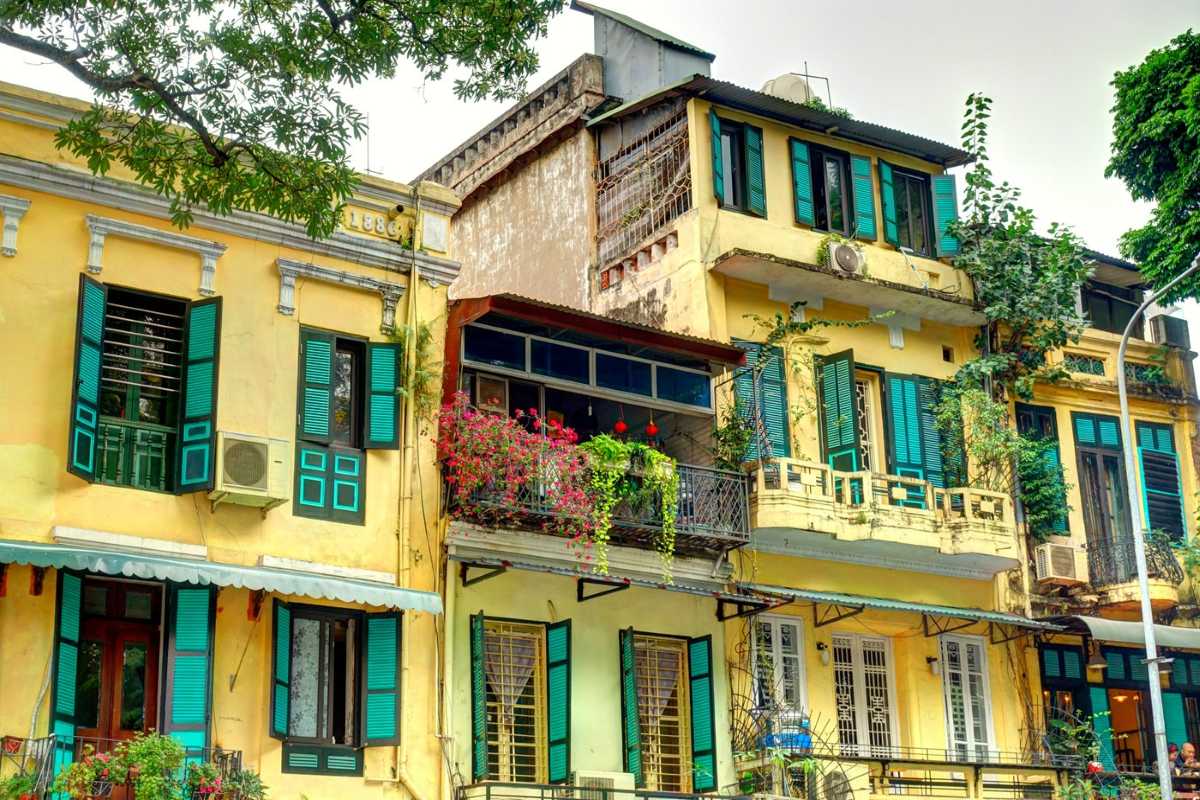
Parks and Public Spaces
The Hanoi French Quarter offers several inviting green spaces and public areas perfect for relaxation and sightseeing. These parks and gardens provide peaceful escapes from the urban bustle and serve as cultural landmarks that enrich the visitor experience.
Among the most notable are Ly Thai To Park and the nearby Hoan Kiem Lake, both cherished by locals and tourists for their natural beauty and historical significance. Whether you seek a quiet stroll or a chance to observe local life, these public spaces add charm and balance to the quarter.
Include visits to these parks in your Hanoi French Quarter itinerary for a refreshing blend of nature and culture.
Ly Thai To Park and Botanical Gardens – Relaxation and Sightseeing
Ly Thai To Park and its botanical gardens offer a tranquil green oasis within the Hanoi French Quarter:
- The park features well-maintained lawns, walking paths, and diverse flora.
- Visitors can admire ornamental plants, flowers, and shaded areas ideal for relaxation.
- The park is named after a historic Vietnamese king, adding cultural depth.
- It is a popular spot for locals to gather, exercise, and enjoy outdoor activities.
Enjoy sightseeing and quiet moments amid the natural beauty of Ly Thai To Park during your visit.
Nearby Hoan Kiem Lake – Cultural and Recreational Importance
Just adjacent to the quarter, Hoan Kiem Lake stands as a cultural icon and beloved public space in Hanoi:
- The lake is associated with legendary Vietnamese tales and spiritual significance.
- It serves as a vibrant gathering place for locals and tourists alike.
- Walking paths around the lake offer scenic views and photo opportunities.
- Various festivals and events take place on its shores throughout the year.
Visiting Hoan Kiem Lake complements your Hanoi French Quarter experience with rich cultural and recreational activities.
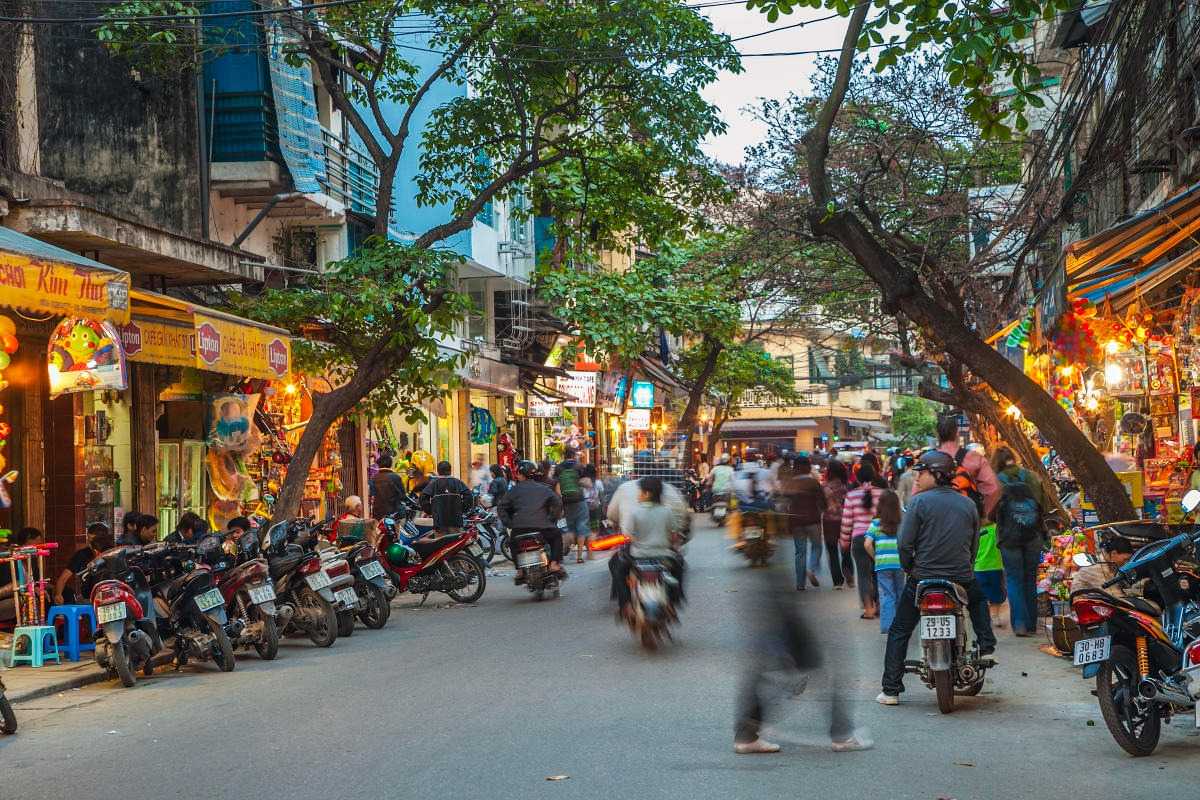
Visitor Experience and Activities
The Hanoi French Quarter offers a variety of engaging experiences that allow visitors to immerse themselves in the district’s rich culture and history. Beyond sightseeing, you can join guided walking tours, enjoy performing arts at the Hanoi Opera House, savor French-Vietnamese fusion cuisine, and explore boutique shops and art galleries. These activities bring the quarter’s heritage to life and provide memorable ways to connect with its unique atmosphere.
Whether you prefer cultural tours, culinary adventures, or shopping for antiques, the Hanoi French Quarter has something to enrich every visitor’s stay.
Plan your activities to make the most of your time in the Hanoi French Quarter and create lasting memories.
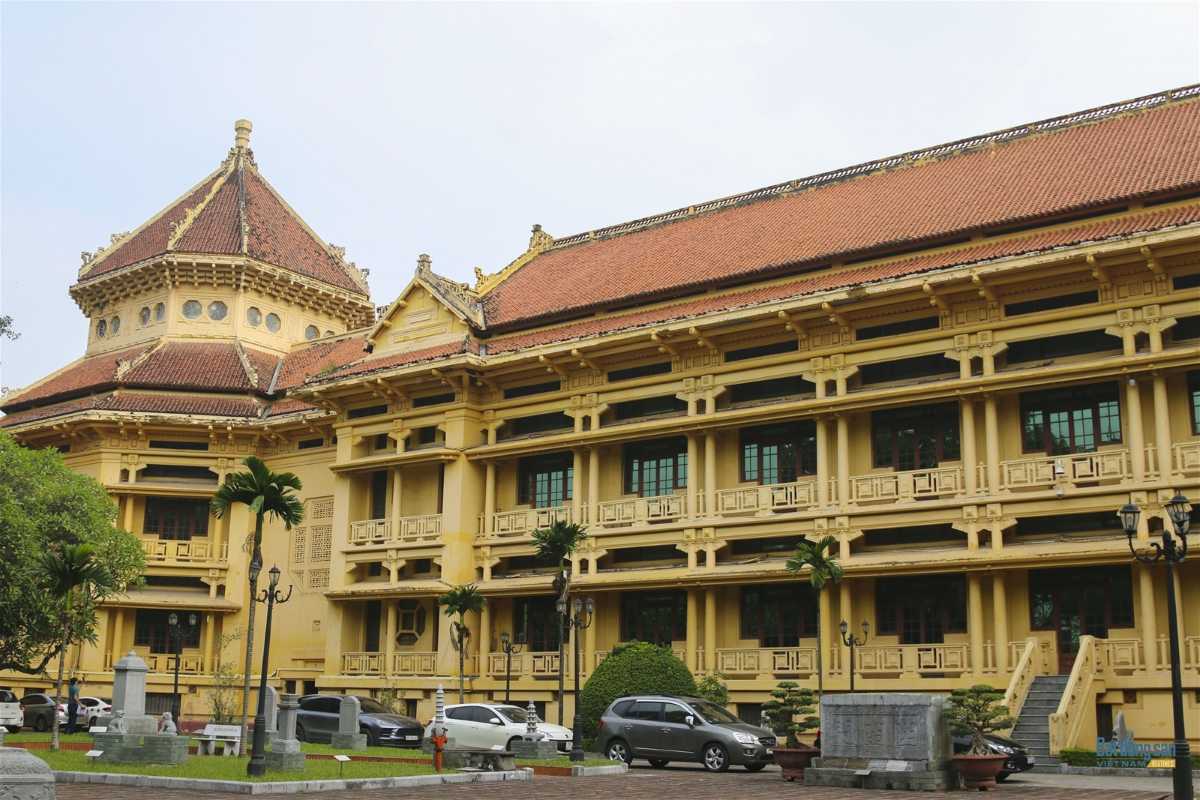
Guided Walking Tours and Architectural Exploration
Exploring the Hanoi French Quarter on foot is a popular way to experience its architecture and history. Guided walking tours offer expert insights into the district’s colonial past and design, providing context that enriches every step.
Popular walking routes often include historic buildings, leafy boulevards, and cultural landmarks. These tours are ideal for those interested in urban history and architectural beauty.
Choose a walking tour to discover the stories behind the Hanoi French Quarter’s iconic structures and hidden corners.
Popular Routes and What Visitors Can Expect
Common walking tour routes in the Hanoi French Quarter include:
- Ba Dinh Boulevard: Showcases grand colonial villas and government buildings.
- Opera House area: Focuses on architectural highlights and cultural landmarks.
- Lake side paths: Combines scenic views with historic streets.
- Hidden alleys: Reveals lesser-known sites and local life.
Visitors can expect knowledgeable guides, comfortable walking paces, and a mix of iconic and off-the-beaten-path experiences.
Enjoy these routes to get a comprehensive view of the Hanoi French Quarter’s charm.
Specialized Tours Focusing on Colonial History and Architecture
For enthusiasts of history and architecture, specialized tours offer deeper exploration:
- Colonial history tours: Emphasize political and social context of French rule.
- Architectural tours: Detail stylistic features like neoclassical and beaux-arts design.
- Heritage walking tours: Highlight preservation efforts and cultural significance.
- Thematic tours: Combine historical narratives with visits to museums and monuments.
These tours provide an authoritative yet accessible perspective on the Hanoi French Quarter.
Select a specialized tour to enrich your understanding of the quarter’s colonial legacy.

Cultural and Performing Arts
The Hanoi French Quarter is a vibrant center for cultural expression, offering visitors the chance to experience a variety of live performances and festivals. From classical opera and ballet at the Hanoi Opera House to traditional music and seasonal cultural events, the quarter provides enriching entertainment that reflects its rich heritage.
Attending these cultural activities enhances your visit by connecting you with the local arts scene and historic traditions. Be sure to check event schedules to coincide your visit with performances or festivals.
Immerse yourself in the dynamic cultural life of the Hanoi French Quarter to deepen your appreciation of the district.
Opera and Theater Performances at Hanoi Opera House
The Hanoi Opera House hosts a variety of performances that showcase both Western and Vietnamese cultural traditions:
- Classical opera and ballet productions by local and international artists.
- Traditional Vietnamese music and dance performances highlighting the country’s heritage.
- Seasonal shows and special events celebrating important cultural dates.
- Ticketing options include advance booking online and on-site purchases.
Enjoying a performance at the Hanoi Opera House offers a unique glimpse into the quarter’s artistic legacy and cultural vibrancy.
Local Festivals and Events Hosted in the Quarter
The Hanoi French Quarter hosts several notable festivals and cultural events throughout the year:
- Lunar New Year celebrations with traditional performances and street festivities.
- Mid-Autumn Festival featuring lantern displays and cultural shows.
- Art exhibitions and music festivals held in historic venues.
- Public celebrations honoring Vietnamese heritage and colonial history.
Planning your visit around these events provides a richer, more festive experience in the Hanoi French Quarter.
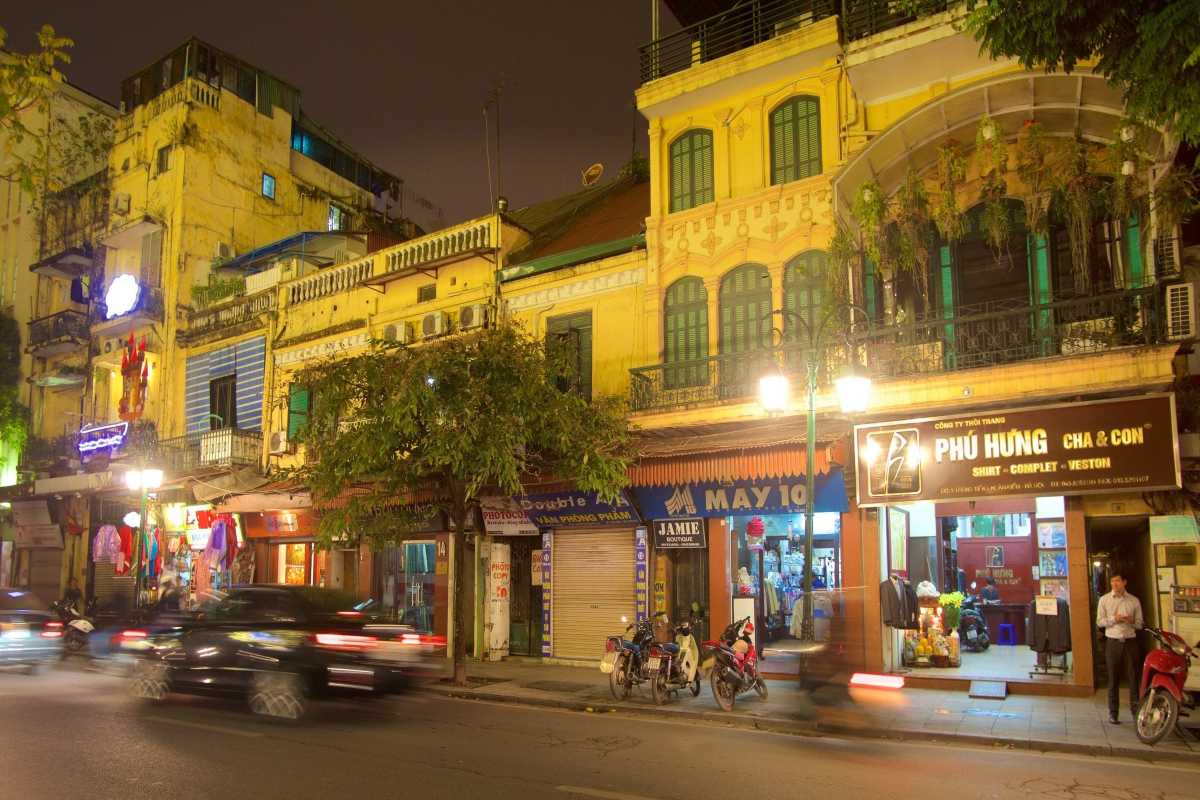
Culinary Experiences and Cafe Culture
The Hanoi French Quarter is renowned for its unique blend of French and Vietnamese culinary traditions. This fusion is evident in the vibrant café culture and diverse dining options throughout the district. Visitors can savor rich Vietnamese coffee alongside delicate French pastries, creating a delightful sensory experience that reflects the quarter’s multicultural heritage.
Exploring the quarter’s cafes and restaurants offers a delicious way to connect with local culture and history. Whether you prefer casual coffee shops or elegant dining, the Hanoi French Quarter provides a memorable culinary journey.
French-Vietnamese Fusion Cuisine and Famous Cafes
Signature dishes and notable cafes in the Hanoi French Quarter include:
- Vietnamese coffee: Strong, aromatic brews often served with condensed milk.
- French pastries: Croissants, éclairs, and other delicate treats reflecting colonial influence.
- Bánh mì sandwiches: A popular fusion snack blending French bread with Vietnamese fillings.
- Famous cafes: Establishments known for historic ambiance and quality beverages.
These offerings highlight the culinary harmony unique to the quarter’s food scene.
Savor the flavors of the Hanoi French Quarter’s French-Vietnamese fusion cuisine during your visit.
Recommendations for Authentic Dining Spots and Culinary Tours
To experience the quarter’s food culture fully, consider:
- Culinary tours: Guided experiences focusing on local markets, street food, and hidden eateries.
- Authentic dining spots: Restaurants serving traditional and fusion dishes with a historical context.
- Food festivals: Events celebrating Hanoi’s gastronomy, often held within or near the quarter.
- Cooking classes: Hands-on opportunities to learn Vietnamese and French culinary techniques.
Choose these options to enrich your culinary adventure in the Hanoi French Quarter.
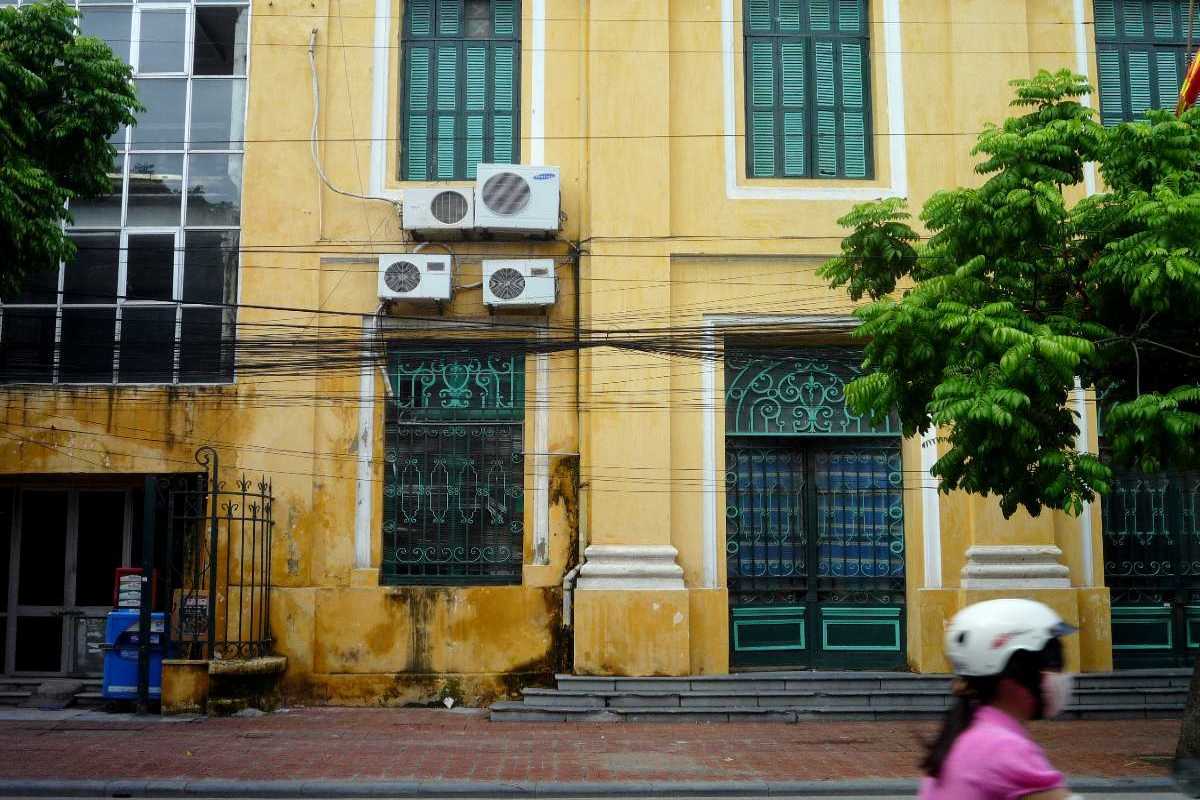
Shopping and Boutiques
The Hanoi French Quarter offers a variety of shopping experiences, from elegant art galleries to charming souvenir stores. Visitors looking for unique crafts, antiques, and luxury items will find plenty of options to explore. The district’s shopping scene blends cultural heritage with contemporary tastes, making it an attractive destination for collectors and casual shoppers alike.
Discover hidden boutiques and galleries where traditional artistry meets modern design in the heart of the Hanoi French Quarter.
Plan your shopping adventure to include these cultural and luxury spots for memorable purchases.
Art Galleries and Antique Shops
Notable galleries and antique dealers in the Hanoi French Quarter include:
- Contemporary art galleries showcasing Vietnamese artists.
- Antique shops offering collectibles and vintage furniture.
- Spaces hosting art exhibitions and cultural events.
- Specialty stores selling handcrafted local artwork and decorative pieces.
These venues provide rich cultural shopping experiences and insight into local artistry.
Explore the Hanoi French Quarter to find inspiring art and treasured antiques.
Souvenir and Luxury Shopping Options
For souvenirs and upscale shopping, the quarter features:
- Souvenir shops selling traditional crafts, textiles, and memorabilia.
- Luxury boutiques offering designer fashion and accessories.
- Stores specializing in jewelry, silk products, and home decor.
- Shops with personalized items and unique gifts for travelers.
These options allow visitors to take home a piece of the Hanoi French Quarter’s charm.
Include souvenir and luxury shopping in your itinerary to capture lasting memories.
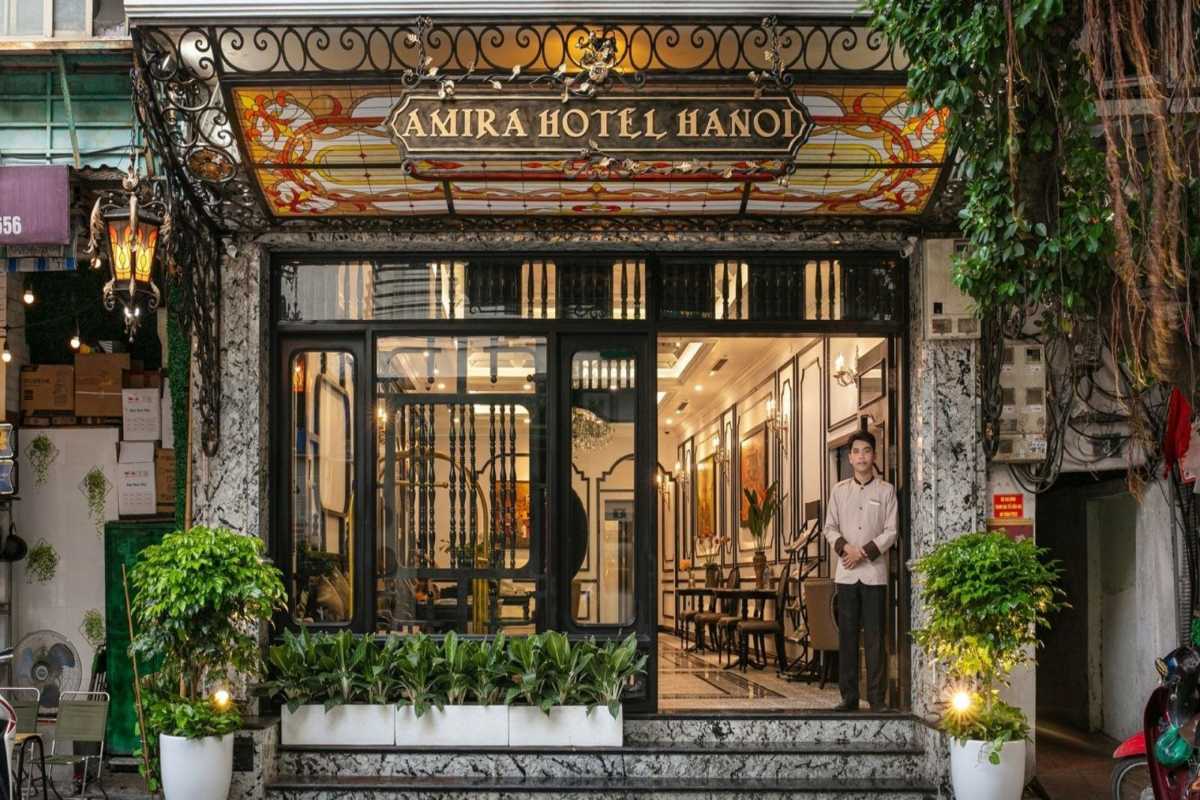
Practical Travel Information
The Hanoi French Quarter is easily accessible and offers a range of visitor facilities to ensure a smooth and enjoyable visit. Whether you are arriving by public transport, taxi, or on foot, knowing the best travel options and the ideal times to visit will help you plan effectively. Information about ticket prices, booking tips, and accessibility services is essential for maximizing your experience in this historic district.
This section provides practical guidance on transportation, visiting hours, and accessibility to help you navigate the Hanoi French Quarter with ease.
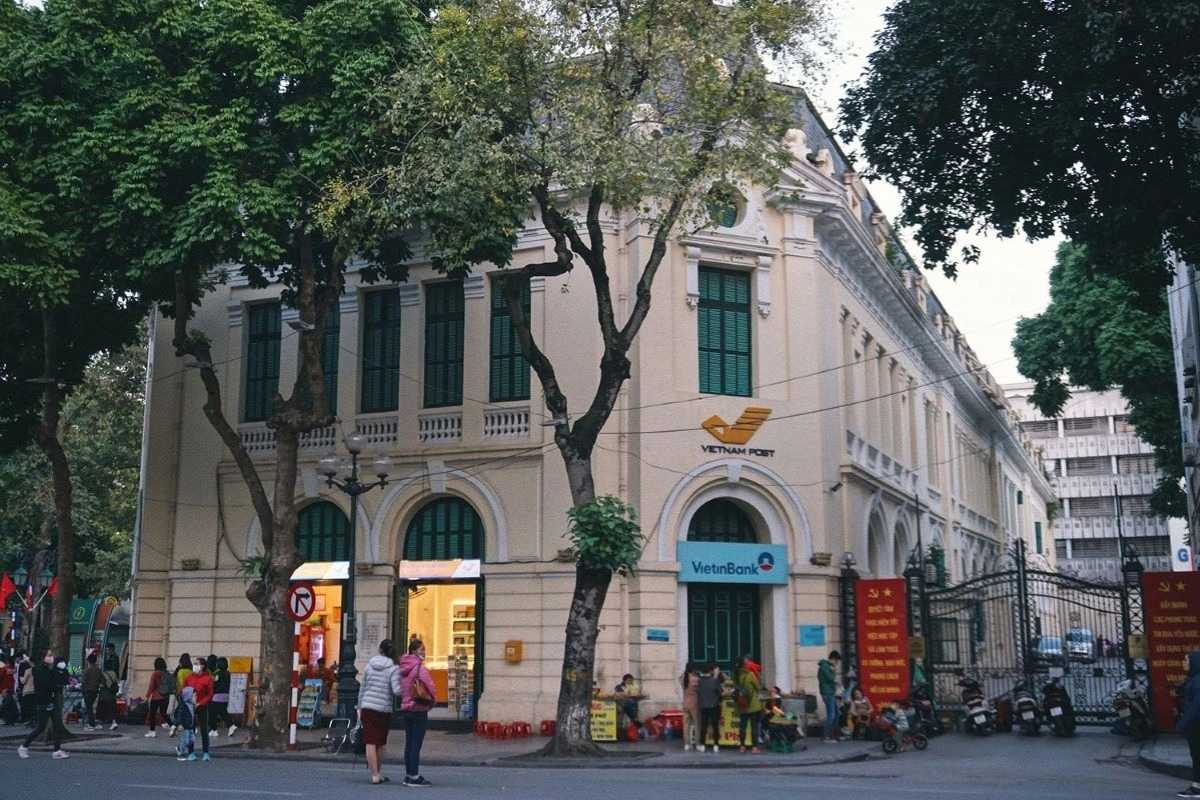
Getting There and Transportation Options
Visitors can reach the Hanoi French Quarter through various convenient transport methods:
- Public buses: Several routes pass near or through the quarter, providing affordable access.
- Taxi and rideshare services: Options like Grab offer easy door-to-door transportation.
- Walking: The quarter is walkable from nearby districts, especially the Old Quarter.
- Bicycle rentals: A popular way to explore the area at a relaxed pace.
Choosing the right transport mode depends on your starting point and travel preferences.
Plan your journey to the Hanoi French Quarter using these reliable transportation options.
Public Transport Routes and Bus Lines Serving the Area
Public transport options for the Hanoi French Quarter include:
- Bus Route 09: Connects key city areas, stopping near the quarter.
- Bus Route 22: Covers routes between downtown and suburban districts.
- Bus Route 36: Passes close to cultural and historical sites within the quarter.
- Other local buses with stops on major boulevards surrounding the area.
These buses provide cost-effective and convenient access for travelers.
Taxi, Rideshare, and Walking Access Details
Additional transport details for visitors:
- Taxi services: Widely available with reputable companies serving Hanoi.
- Rideshare: Grab is the most popular app, offering reliable and affordable rides.
- Walking: The quarter is compact and easy to navigate on foot, with scenic streets and landmarks.
- Pedestrian routes: Well-marked sidewalks and crossings enhance walkability.
These options offer flexibility for visitors exploring the Hanoi French Quarter at their own pace.
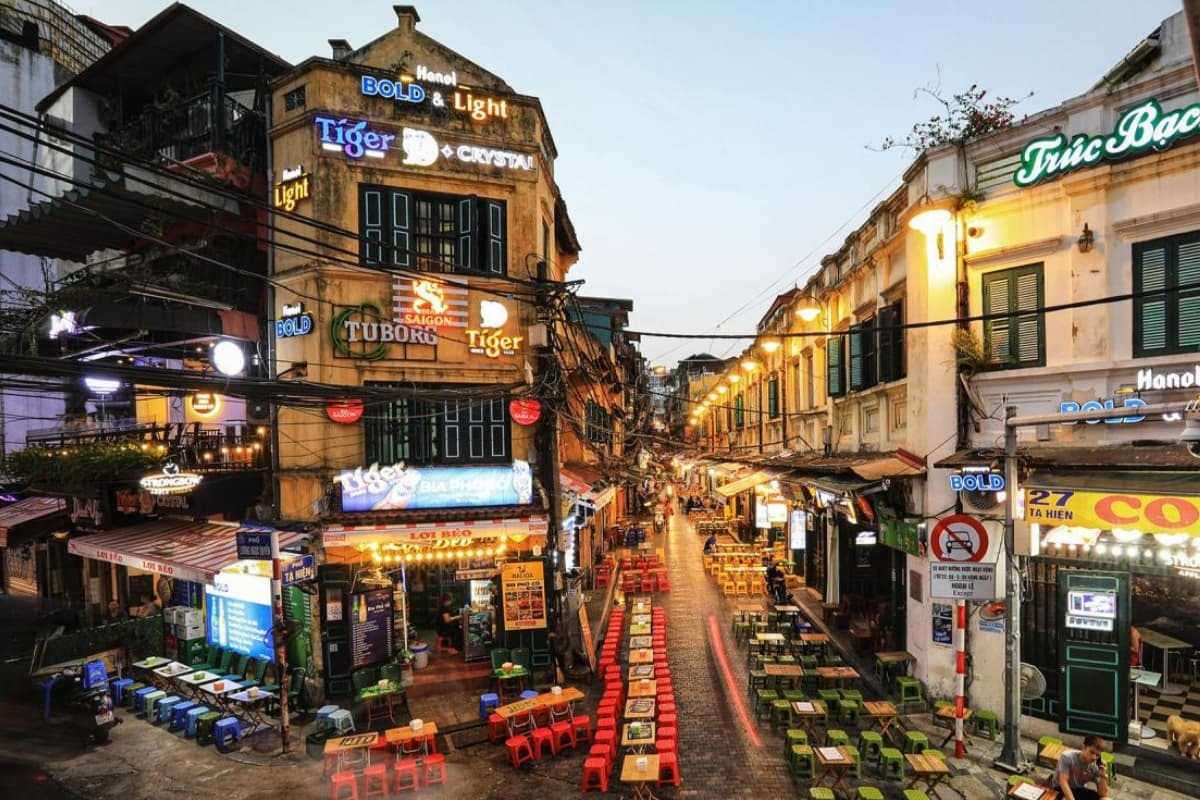
Best Times to Visit
Choosing the best time to visit the Hanoi French Quarter can greatly enhance your experience. The quarter is most enjoyable during periods of pleasant weather and cultural vibrancy. Understanding seasonal weather patterns and the timing of special events will help you plan your trip to maximize comfort and engagement with local traditions.
Whether you prefer mild temperatures or want to experience festivals, knowing when to visit allows you to tailor your itinerary for an optimal stay in the Hanoi French Quarter.
Seasonal Weather Patterns and Ideal Visiting Months
The climate in Hanoi affects the best times to explore the French Quarter:
- Dry Season (October to April): Cool, dry weather ideal for walking and outdoor sightseeing.
- Wet Season (May to September): Higher humidity and frequent rains may limit outdoor activities.
- Temperature Range: Average lows of 15°C in winter to highs of 33°C in summer.
- Shoulder Months: April and October offer pleasant weather with fewer tourists.
Plan your visit during the dry season for comfortable exploration of the quarter’s streets and attractions.
Special Events Calendar Influencing Visitor Traffic
Several festivals and events in the Hanoi French Quarter attract visitors and add cultural excitement:
- Lunar New Year (Tet) – January/February: Vibrant celebrations and street festivities.
- Mid-Autumn Festival – September/October: Lantern displays and traditional performances.
- Hanoi International Film Festival – Various dates: Cultural showcases and screenings.
- Art and music festivals – Throughout the year in venues like the Hanoi Opera House.
Consider these events when planning your visit to experience the quarter’s lively cultural scene or to avoid peak crowds.
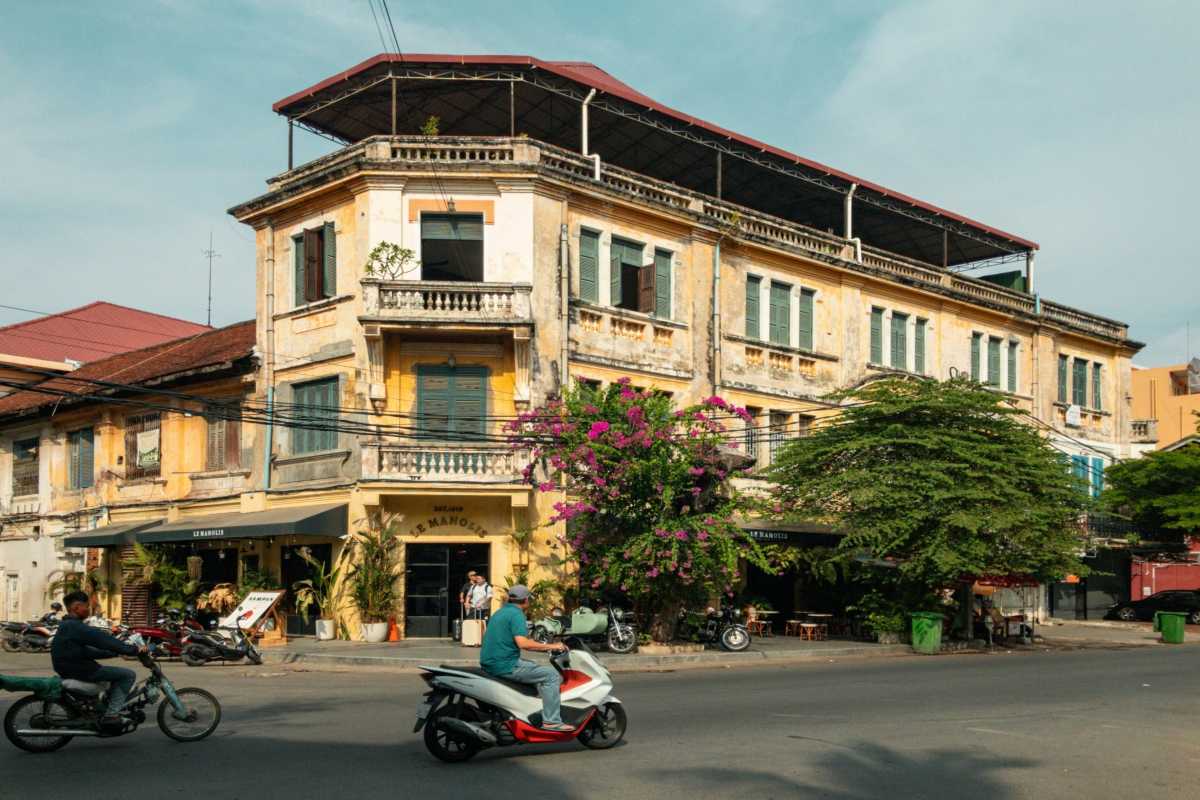
Entrance Fees and Booking Information
Understanding the entrance fees and booking procedures is essential for planning your visit to the Hanoi French Quarter. Many attractions and performances require tickets, and knowing the costs and how to secure them in advance can save time and ensure you don’t miss out on popular events.
This section provides clear pricing information and practical advice on purchasing tickets for museums, shows, and tours within the quarter.
Ticketing for Museums, Opera Shows, and Tours
Key ticketing details for the Hanoi French Quarter include:
- Hanoi Opera House tickets: Prices vary from $10 to $50 depending on the performance. Advance booking recommended for popular shows.
- Hoa Lo Prison Museum admission: Approximately $1 to $3; tickets available on-site.
- Guided walking tours: Prices range between $15 and $40 per person, often bookable online or through agencies.
- Museum combo tickets: Some museums offer combined entry passes at discounted rates.
Checking official websites or authorized sellers helps ensure genuine tickets and better planning.
Online and On-Site Booking Tips
To avoid delays and sold-out events, consider these booking tips:
- Purchase tickets online in advance when possible, especially for the Hanoi Opera House performances.
- Use reputable platforms such as official museum sites or trusted travel agencies like Asia Travel Links.
- Arrive early for on-site ticket purchases during peak seasons.
- Confirm cancellation policies and refund options before buying.
Booking efficiently ensures a hassle-free experience in the Hanoi French Quarter.
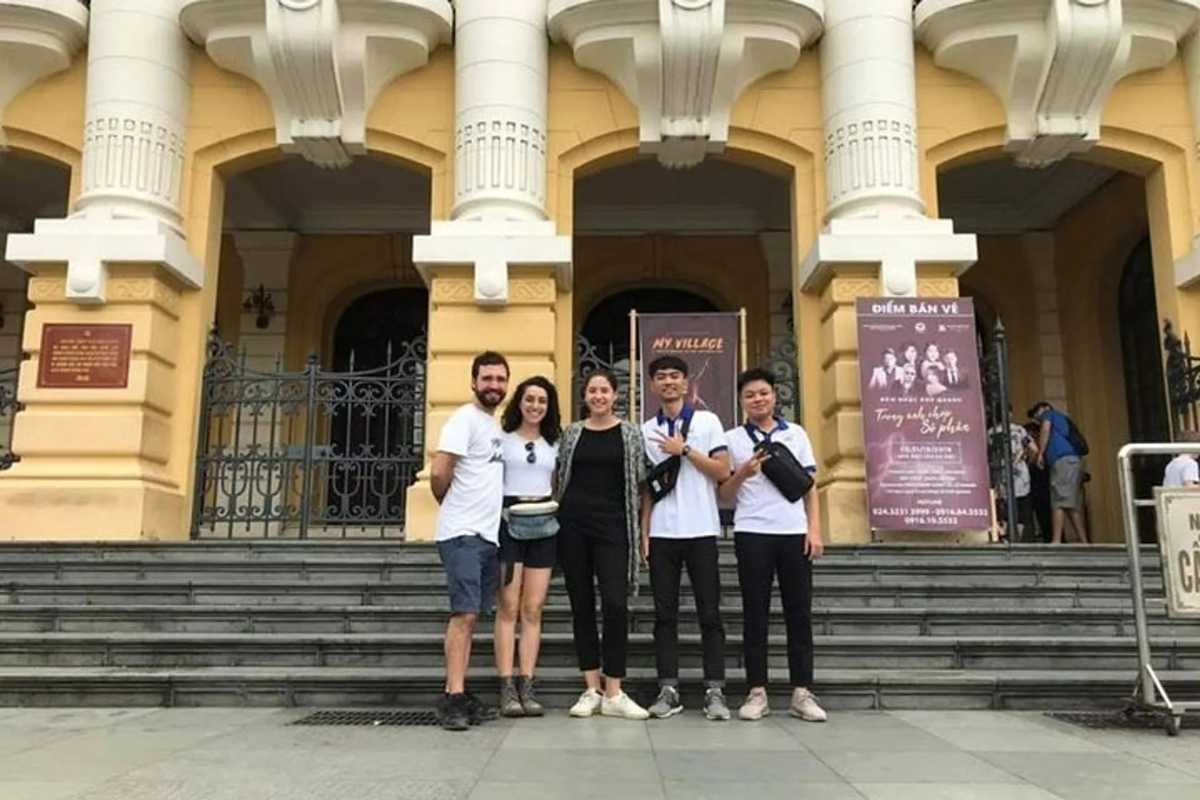
Accessibility and Visitor Facilities
The Hanoi French Quarter is committed to providing accessible facilities and visitor amenities to ensure a comfortable and inclusive experience for all guests. Whether you have mobility challenges or simply want convenient services during your visit, the quarter offers various provisions to support your needs.
Knowing what facilities are available helps you plan your visit with confidence and ease.
Facilities for Differently-Abled Visitors
Accessibility features in the Hanoi French Quarter include:
- Wheelchair ramps at major attractions and public buildings.
- Accessible restrooms designed for ease of use.
- Reserved seating areas in performance venues like the Hanoi Opera House.
- Support services and information available at visitor centers.
These accommodations help ensure that differently-abled visitors can enjoy the quarter comfortably.
Amenities Including Restrooms, Cafes, and Visitor Centers
For general visitor convenience, the quarter offers:
- Public restrooms located near major sites and parks.
- Cafes and refreshment areas providing rest and dining options.
- Visitor centers offering maps, guides, and assistance.
- Seating areas and shaded spots for relaxation during exploration.
These amenities enhance the overall visitor experience in the Hanoi French Quarter.
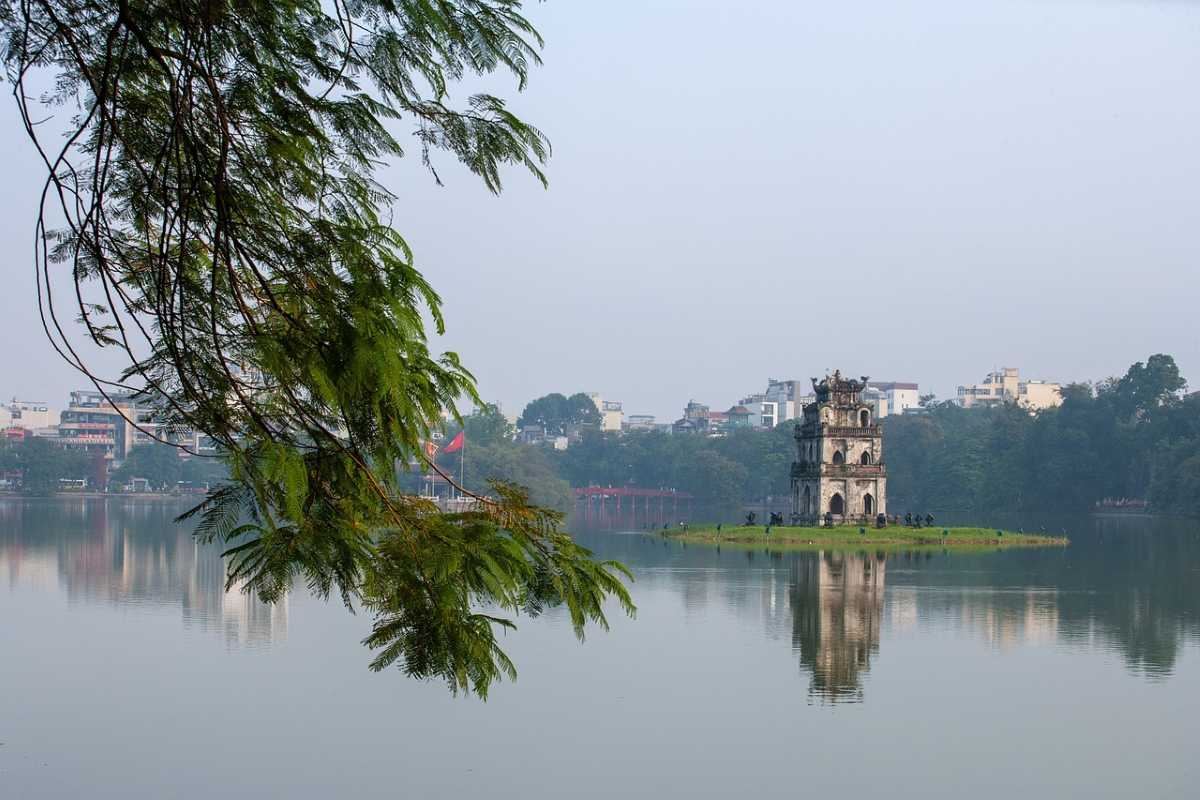
Conservation and Sustainability Efforts
The Hanoi French Quarter is the focus of dedicated conservation and sustainability initiatives aimed at preserving its colonial architectural heritage while promoting responsible tourism. These efforts are essential to maintaining the district’s historical integrity amid urban growth and increasing visitor numbers.
Understanding these initiatives helps travelers appreciate the quarter’s cultural value and supports sustainable tourism development for future generations.
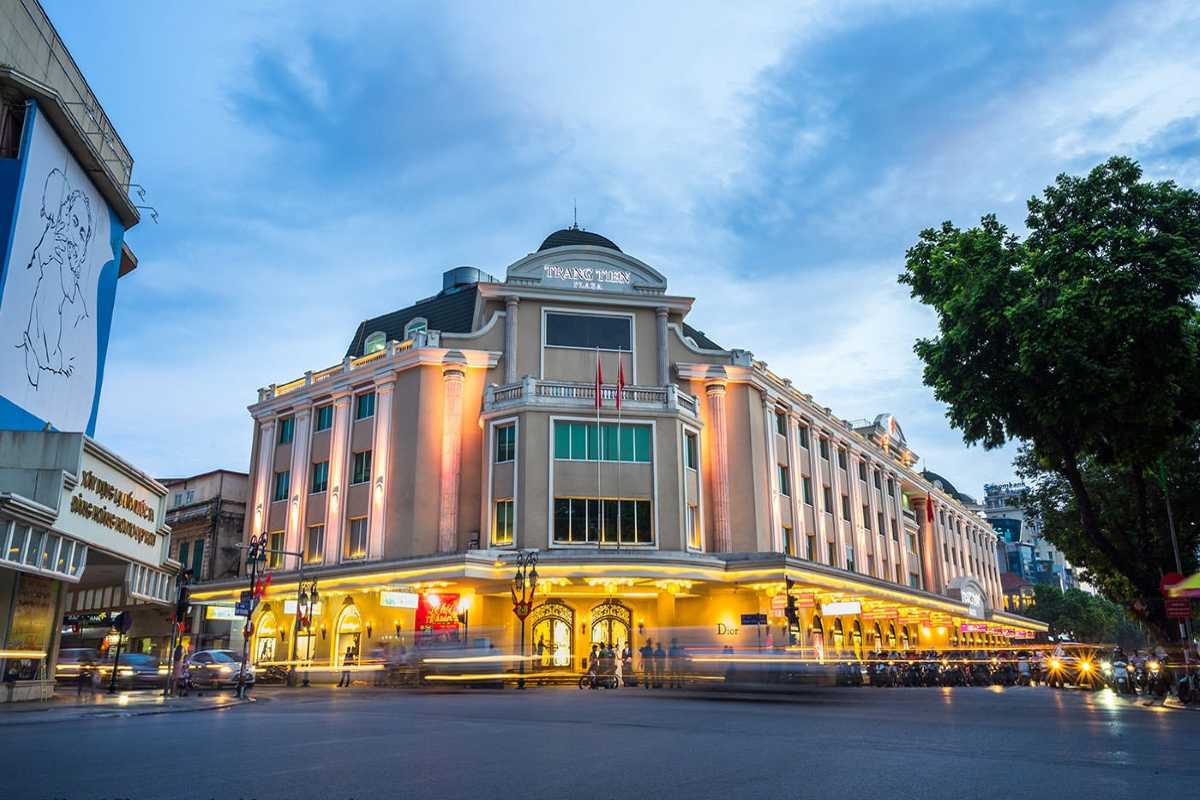
Preservation of Colonial Architecture
Key efforts to preserve the Hanoi French Quarter’s architecture include:
- Restoration projects funded by government and international grants.
- Heritage protection laws regulating alterations and construction.
- Collaboration with local communities to maintain historic aesthetics.
- Educational programs raising awareness about architectural heritage.
These measures aim to safeguard the quarter’s unique colonial buildings for future generations.
Restoration Projects and Heritage Regulations
Important initiatives and regulations in Hanoi include:
- Government-led restoration of landmark buildings in the quarter.
- Enforcement of heritage laws to control urban development impacts.
- Funding and support for cultural preservation programs.
- Partnerships with UNESCO and cultural organizations.
These frameworks ensure ongoing care for the Hanoi French Quarter’s historic environment.
Challenges Faced from Urbanization and Tourism
The quarter faces several preservation challenges:
- Urban sprawl threatening historic sites with new development.
- Increased tourism causing wear and pressure on fragile structures.
- Balancing modern needs with heritage conservation demands.
- Managing infrastructure upgrades without compromising authenticity.
Addressing these challenges is vital to sustaining the Hanoi French Quarter’s cultural legacy.
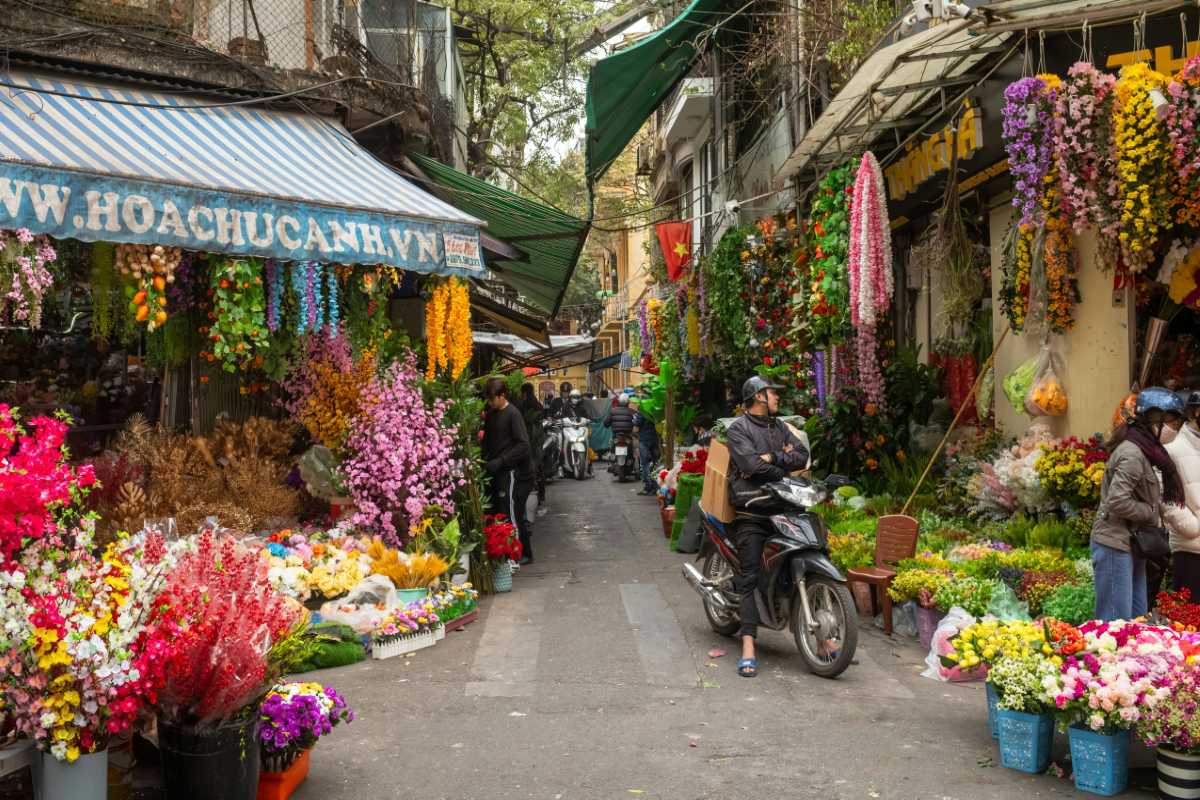
Sustainable Tourism Practices
The Hanoi French Quarter embraces sustainable tourism by encouraging responsible visitation that respects cultural heritage and minimizes environmental impact. Local initiatives focus on educating visitors and promoting behaviors that help preserve the quarter’s unique character for future travelers.
Learning about these practices allows you to contribute positively during your visit and support ongoing conservation efforts.
Local Initiatives Promoting Responsible Visitation
Key programs promoting sustainable tourism in the Hanoi French Quarter include:
- Visitor guidelines encouraging respectful behavior and heritage protection.
- Waste reduction efforts in public spaces and cultural sites.
- Promotion of eco-friendly transportation options like walking and cycling.
- Collaboration with tour operators to ensure responsible tour practices.
Following these initiatives helps maintain the quarter’s integrity and visitor enjoyment.
Community Engagement and Cultural Preservation Programs
Community-led efforts play a vital role in sustaining the Hanoi French Quarter’s cultural richness:
- Local organizations conducting cultural education and awareness campaigns.
- Partnerships with residents to preserve traditional customs and festivals.
- Volunteer programs supporting heritage site maintenance.
- Promotion of cultural tourism that benefits the local economy.
Supporting these programs enhances your experience and helps protect the quarter’s heritage.

Future Prospects for the French Quarter
The Hanoi French Quarter is poised for sustainable growth through thoughtful development and heritage promotion. Upcoming projects aim to balance infrastructure upgrades with cultural preservation, ensuring the district remains a vibrant and authentic destination.
These future plans inspire confidence in the quarter’s ongoing relevance and appeal to both locals and tourists interested in meaningful cultural tourism.
Planned Infrastructure Upgrades and Heritage Promotion
Key upcoming initiatives include:
- Streetscape improvements to enhance pedestrian access and aesthetics.
- Restoration of historic buildings with modern conservation techniques.
- Increased marketing efforts to promote the quarter as a cultural tourism hub.
- Introduction of smart tourism services and visitor information centers.
These projects aim to improve visitor experience while respecting the quarter’s heritage.
Opportunities for Authentic Cultural Tourism Development
The quarter offers growing opportunities for genuine cultural tourism:
- Development of community-based tours that highlight local traditions.
- Expansion of cultural events and festivals celebrating heritage.
- Support for artisanal crafts and local businesses within the district.
- Initiatives encouraging visitor participation in cultural preservation.
These opportunities foster a tourism model that benefits both the community and visitors alike.

Surrounding Areas and Complementary Attractions
The Hanoi French Quarter is ideally located near several other iconic destinations that enrich any visit to the area. Exploring adjacent neighborhoods like the Hanoi Old Quarter and the scenic Hoan Kiem Lake offers a fuller cultural experience. Additionally, a variety of lodging options including boutique hotels and historic accommodations provide comfortable bases for travelers seeking to immerse themselves in Hanoi’s vibrant atmosphere.
Planning visits to these nearby attractions and choosing convenient accommodations can make your trip to the Hanoi French Quarter even more rewarding.
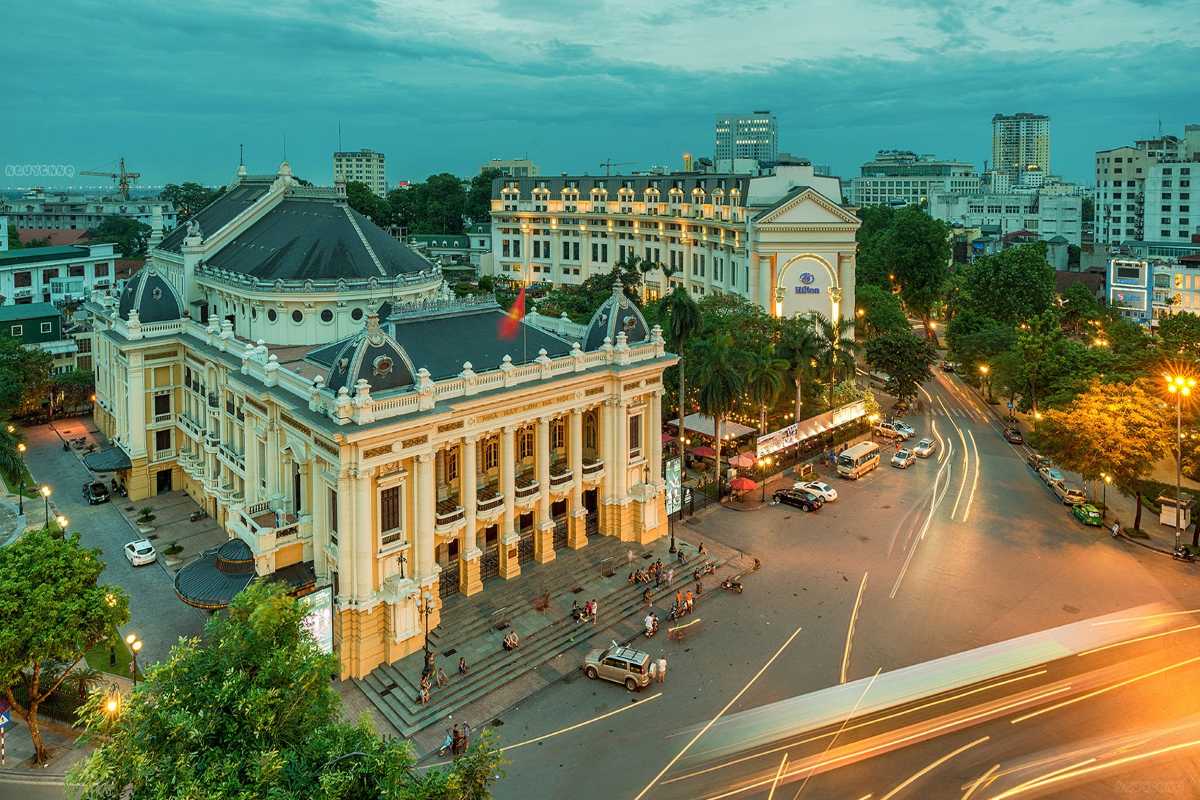
Proximity to Hanoi Old Quarter and Hoan Kiem Lake
The Hanoi French Quarter shares close geographical and cultural ties with the Hanoi Old Quarter and Hoan Kiem Lake:
- The districts lie within walking distance, about 1 to 2 kilometers apart.
- Urban walking paths and pedestrian-friendly streets connect these vibrant areas.
- The proximity allows easy exploration of historical landmarks, markets, and lakeside scenery.
- Visitors can enjoy diverse cultural experiences within a compact area.
Connecting your visit between these areas offers a comprehensive view of Hanoi’s heritage.
Suggested Walking Routes Linking the French Quarter to Adjacent Areas
Practical walking routes include:
- Lê Thái Tổ Street: Scenic boulevard connecting the French Quarter to Hoan Kiem Lake.
- Đinh Tiên Hoàng Street: Historic street leading to the heart of the Old Quarter.
- Around the lake loop: Combines green space with cultural landmarks.
- Side alleys: Provide quiet, atmospheric passages with local shops.
These routes allow visitors to explore on foot with ease and enjoy the quarter’s surroundings.
Highlights of Nearby Attractions for Combined Visits
Notable sites to visit near the Hanoi French Quarter include:
- Hanoi Old Quarter: Bustling markets, street food, and ancient architecture.
- Hoan Kiem Lake: A cultural and spiritual symbol with scenic walking paths.
- Temples such as Ngoc Son and Bach Ma nearby.
- Local markets offering crafts and traditional goods.
Including these attractions adds cultural depth and variety to your itinerary.

Nearby Cultural and Historical Sites
The Hanoi French Quarter is surrounded by a wealth of cultural and historical sites easily reachable on foot. Museums, temples, and local markets offer rich experiences that complement a visit to the quarter. Exploring these venues allows visitors to deepen their understanding of Hanoi’s heritage without the need for extensive travel.
These accessible sites provide a convenient way to enjoy diverse aspects of the city’s history and culture.
Museums, Temples, and Markets Within Walking Distance
Notable nearby cultural venues include:
- Vietnam Fine Arts Museum: Showcases Vietnamese art from ancient to modern times.
- Temple of Literature: Historic Confucian temple and educational site.
- Dong Xuan Market: Large market offering local goods, textiles, and street food.
- Quan Thanh Temple: Taoist temple known for its architecture and spiritual significance.
These sites provide rich, varied experiences just steps from the Hanoi French Quarter.
Recommended Day Trips or Excursions From the French Quarter
Popular day trips to consider include:
- Bat Trang Ceramic Village: Traditional pottery-making village about 13 km away.
- Perfume Pagoda: Scenic Buddhist complex reachable by boat and hike.
- Hoa Lu Ancient Capital: Historical site with temples and caves approximately 90 km from Hanoi.
- Tam Coc: Known for river boat tours through limestone karsts and rice paddies.
These excursions offer cultural and natural exploration options beyond the city center.

Accommodation Options Near the French Quarter
The Hanoi French Quarter area offers a diverse range of lodging options to suit various traveler preferences and budgets. From boutique hotels rich in heritage to more affordable guesthouses, visitors can find accommodations that enhance their experience of the district and the city as a whole.
Considering location, amenities, and style will help you select the ideal place to stay near the Hanoi French Quarter.
Boutique Hotels and Historic Accommodations
Notable lodging options include:
- Boutique hotels offering personalized service and unique design inspired by colonial architecture.
- Heritage hotels with historic significance, blending modern comfort with classic charm.
- Luxury accommodations featuring upscale amenities and prime locations within the quarter.
- Guesthouses providing budget-friendly stays with authentic local atmosphere.
These options ensure memorable and comfortable visits to the Hanoi French Quarter.
Practical Tips for Choosing Lodging Based on Visitor Preferences
When selecting accommodation near the quarter, consider:
- Proximity to key attractions and public transport for convenience.
- Budget range and desired level of comfort.
- Preferences for historic ambiance versus modern amenities.
- Availability of dining options and other facilities within or nearby the hotel.
These tips will help you make an informed decision for a pleasant stay near the Hanoi French Quarter.
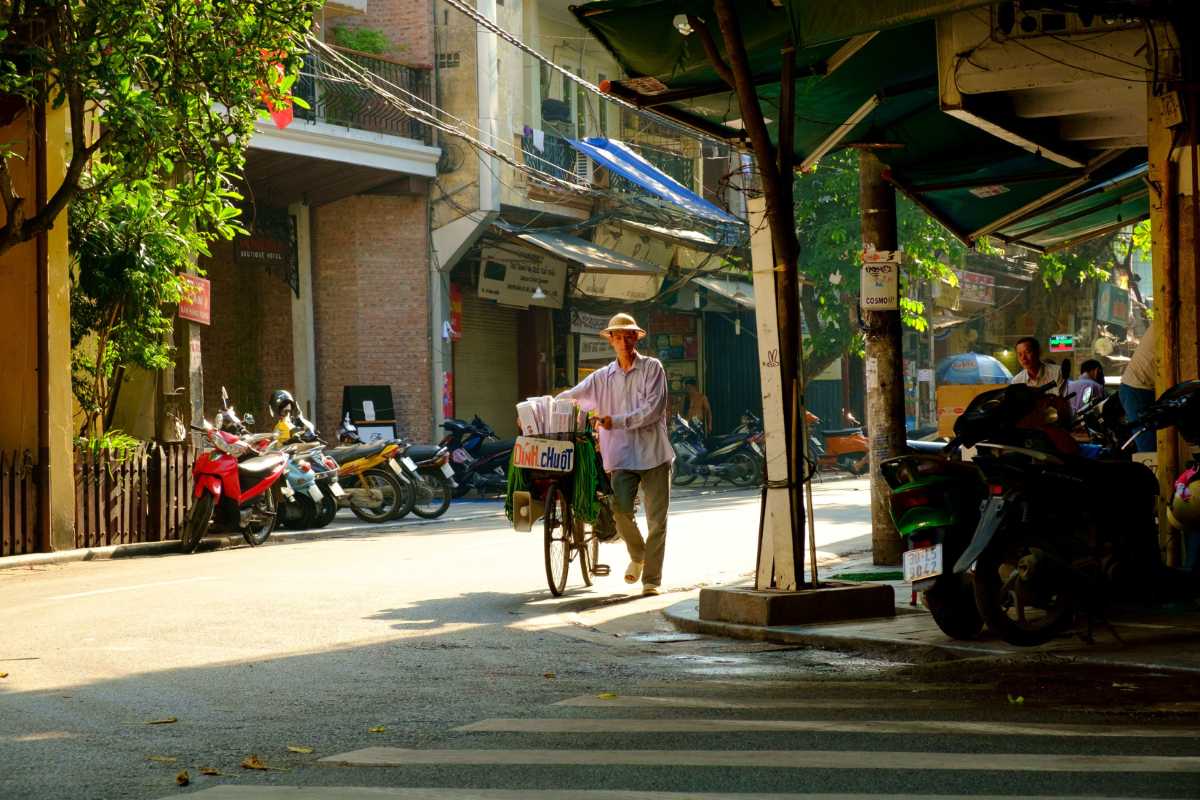
Insider Tips and Recommendations
The Hanoi French Quarter holds many secrets that can transform your visit into a unique and authentic experience. By learning how to navigate like a local, discovering hidden gems, and understanding safety and etiquette, you can explore the district comfortably and respectfully. These insider tips help you avoid crowds and make the most of your time in the quarter.

Navigating the French Quarter Like a Local
To experience the Hanoi French Quarter authentically:
- Visit early mornings or late afternoons to avoid peak tourist crowds.
- Explore side streets and alleys for charming cafes and boutiques.
- Use local transport options like cyclos or bicycle rentals for an immersive experience.
- Engage with local vendors and artisans to discover unique crafts.
These tips help you see the quarter from a local’s perspective and enjoy its quiet charm.
Less Crowded Times and Hidden Gems
Ideal visiting times and secret spots include:
- Weekday mornings and early evenings when tourist traffic is low.
- Hidden cafes on smaller streets offering authentic French-Vietnamese pastries.
- Quiet parks and gardens tucked away from main roads.
- Lesser-known galleries and antique shops showcasing local artistry.
Discovering these gems enriches your visit beyond the usual tourist paths.
Safety and Etiquette Advice
To travel confidently and respectfully in the Hanoi French Quarter:
- Keep valuables secure and stay aware of your surroundings.
- Dress modestly when visiting religious sites.
- Use polite greetings and observe local customs.
- Avoid loud behavior and respect public spaces.
Following these guidelines ensures a pleasant and safe visit.

Maximizing the Visitor Experience
Creating a memorable visit to the Hanoi French Quarter involves blending tours, dining, and entertainment into a well-rounded itinerary. This approach lets you savor the district’s rich history, vibrant culture, and unique culinary delights all in one trip.
Combining these elements ensures a fulfilling and engaging experience in the heart of Hanoi.
Combining Tours with Local Dining and Entertainment
Consider these popular combinations for a full experience:
- Morning guided walking tours followed by lunch at renowned French-Vietnamese fusion restaurants.
- Afternoon visits to museums paired with early evening performances at the Hanoi Opera House.
- Culinary tours that include visits to historic cafes and late-night cultural shows.
- Exploring boutique shops and art galleries before enjoying local nightlife options.
These combinations help you optimize your time and savor diverse facets of the quarter.
Photography Tips and Best Viewpoints
To capture stunning photos in the Hanoi French Quarter:
- Visit the Hanoi Opera House at golden hour for striking architectural shots.
- Explore side streets early morning to photograph quiet, charming alleys.
- Capture reflections and activities around Hoan Kiem Lake nearby.
- Use elevated spots in cafes or hotels for panoramic views.
These tips help you preserve lasting memories of your visit.

Tailored Suggestions for Different Visitor Types
The Hanoi French Quarter welcomes a variety of travelers, each with unique preferences and needs. Understanding your travel style helps you choose the best activities, accommodations, and experiences suited to your group, ensuring a comfortable and enjoyable visit.
Whether you’re traveling with family, exploring solo, or seeking luxury, the quarter offers options tailored for you.
Families, Cultural Tourists, and Solo Travelers
Practical recommendations include:
- Families: Visit spacious parks and museums with child-friendly exhibits; opt for relaxed walking tours.
- Cultural Tourists: Focus on historic landmarks, museums, and guided heritage tours for deep learning.
- Solo Travelers: Explore at your own pace, enjoy local cafes, and join group tours for safety and socializing.
These tips help each group tailor their experience in the quarter.
Budget Travelers versus Luxury Seekers
Options for different budgets include:
- Budget Travelers: Choose affordable guesthouses and street food; explore free public parks and markets.
- Luxury Seekers: Stay in heritage hotels with premium amenities; dine at upscale French-Vietnamese restaurants; enjoy private tours.
Balancing budget and comfort ensures the best visit for every traveler.

Conclusion
The Hanoi French Quarter remains a captivating destination rich in history, culture, and architectural beauty. This guide has highlighted its unique heritage, key attractions, and practical travel tips to help you plan an enriching visit. Embracing the quarter’s authentic charm offers a memorable experience deeply connected to Hanoi’s urban soul.
Take the time to explore thoughtfully, respect the cultural legacy, and enjoy all that the Hanoi French Quarter has to offer.

Recap of Hanoi French Quarter’s Importance and Appeal
Key highlights of the Hanoi French Quarter include:
- Rich historical background reflecting French colonial influence.
- Iconic architecture such as the Hanoi Opera House and St. Joseph’s Cathedral.
- Vibrant cultural sites including museums and parks.
- Unique blend of heritage and modern urban life.
These elements combine to make the quarter a must-visit cultural hub.
Summary of Key Historical and Cultural Highlights
Essential features to remember:
- The quarter’s establishment as a colonial administrative and residential district.
- Preservation of architectural styles like Neoclassical and Beaux-Arts.
- Cultural significance as a center of Hanoi’s identity and heritage.
- Ongoing conservation and sustainable tourism efforts.
Understanding these highlights enriches your appreciation of the area.
Encouragement to Explore and Experience the Quarter Firsthand
Visiting the Hanoi French Quarter invites you to step into a living museum where history and culture thrive. Embrace the authentic atmosphere, savor local cuisine, and discover hidden gems to create your own unforgettable journey in Hanoi.
Plan your trip with curiosity and respect, and let the quarter’s charm unfold naturally.

Final Practical Advice for Visitors
To ensure a smooth and enjoyable visit to the Hanoi French Quarter, keep these practical tips in mind. Being prepared and respectful helps preserve the quarter’s unique charm and ensures a positive experience for everyone.
Best Ways to Plan a Visit and Maximize Enjoyment
Key planning tips include:
- Schedule visits during less crowded times such as weekday mornings or late afternoons.
- Book tickets in advance for popular attractions like the Hanoi Opera House.
- Combine walking tours with local dining and cultural activities to make the most of your time.
- Use reliable transportation options to easily access the quarter and surrounding sites.
These steps help optimize your itinerary and enhance your overall visit.
Importance of Respecting Heritage and Local Culture
Responsible tourism in the Hanoi French Quarter means:
- Following local customs and showing courtesy to residents and vendors.
- Avoiding damage or disrespect to historic buildings and cultural sites.
- Supporting community-led preservation efforts by choosing sustainable activities.
- Maintaining cleanliness and being mindful of public spaces.
Your respectful behavior contributes to preserving this historic district for future generations.
Mike Nguyen
Travel Advisor
Mobile: +84917506881 (whatsapp available)
Email: contact@asiatravellinks.com
Faqs
The Hanoi French Quarter is a historic district in Hanoi known for its distinctive French colonial architecture, cultural landmarks, and vibrant atmosphere. It reflects the city's colonial past and serves as a major attraction for visitors interested in history and architecture.
- Characterized by wide boulevards, tree-lined streets, and elegant buildings.
- Home to important cultural institutions like the Hanoi Opera House and heritage hotels.
- Offers a blend of historical sites, dining, shopping, and cultural experiences.
- Represents a significant period of urban development during French colonial rule.
Visiting the Hanoi French Quarter offers a unique glimpse into Hanoi's colonial history and contemporary culture, making it a must-see area for travelers.
Getting to the Hanoi French Quarter is convenient via various transport options suited for different preferences and budgets. It is centrally located and well connected to the rest of Hanoi.
- Public buses with routes stopping near the quarter.
- Taxis and rideshare services such as Grab provide flexible, door-to-door transport.
- Walking is a pleasant option if staying nearby in districts like the Old Quarter.
- Cyclo (bicycle taxi) rides offer a traditional and scenic approach for short distances.
Planning your route ahead helps ensure smooth access to the Hanoi French Quarter. Consider the time of day and traffic conditions for the best travel experience.
Most attractions in the Hanoi French Quarter charge modest entrance fees or offer free access, with ticket prices varying by site. Knowing these fees helps visitors plan their budget efficiently.
- The Hanoi Opera House ticket prices vary depending on the performance, typically ranging from affordable to premium.
- Museums such as the Hoa Lo Prison Museum and the Vietnam National Museum of History charge admission fees, generally low-cost for local and international visitors.
- Some public landmarks and parks have free access or nominal entry costs.
- Guided tours or special exhibitions may require separate tickets.
Booking tickets in advance can save time and guarantee entry, especially during peak tourist seasons.
The ideal time to visit the Hanoi French Quarter depends on weather and cultural events. Planning your visit around these factors enhances comfort and enjoyment.
- The dry season from October to April offers cooler temperatures and less rain, suitable for outdoor activities.
- Spring (February to April) and autumn (September to November) provide pleasant weather and vibrant local festivals.
- Avoid the rainy summer months (May to September) to prevent disruptions to walking tours and sightseeing.
- Major cultural festivals in the quarter can offer unique experiences but may bring larger crowds.
Choosing the right season helps visitors enjoy all that the Hanoi French Quarter offers with minimal inconvenience.



